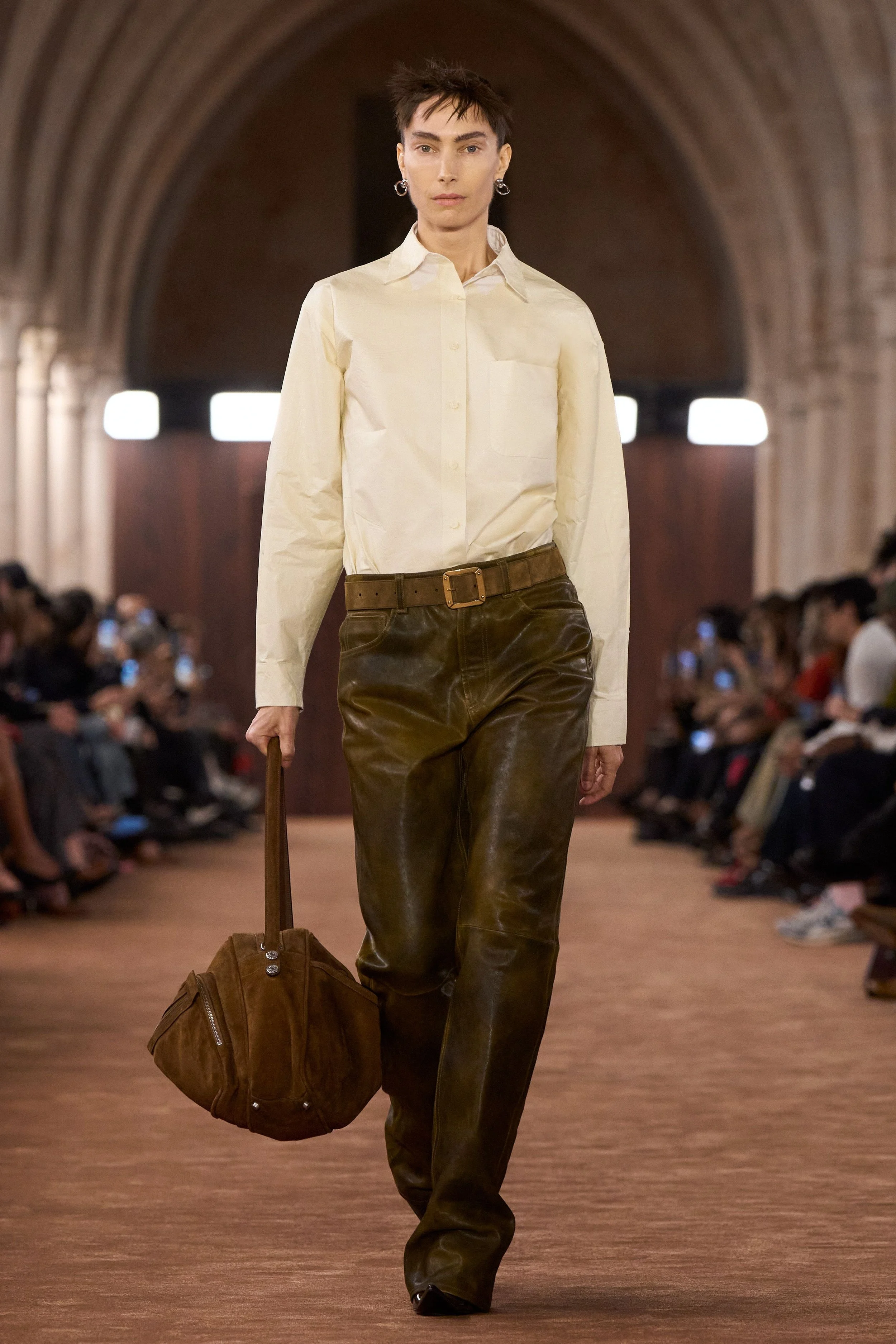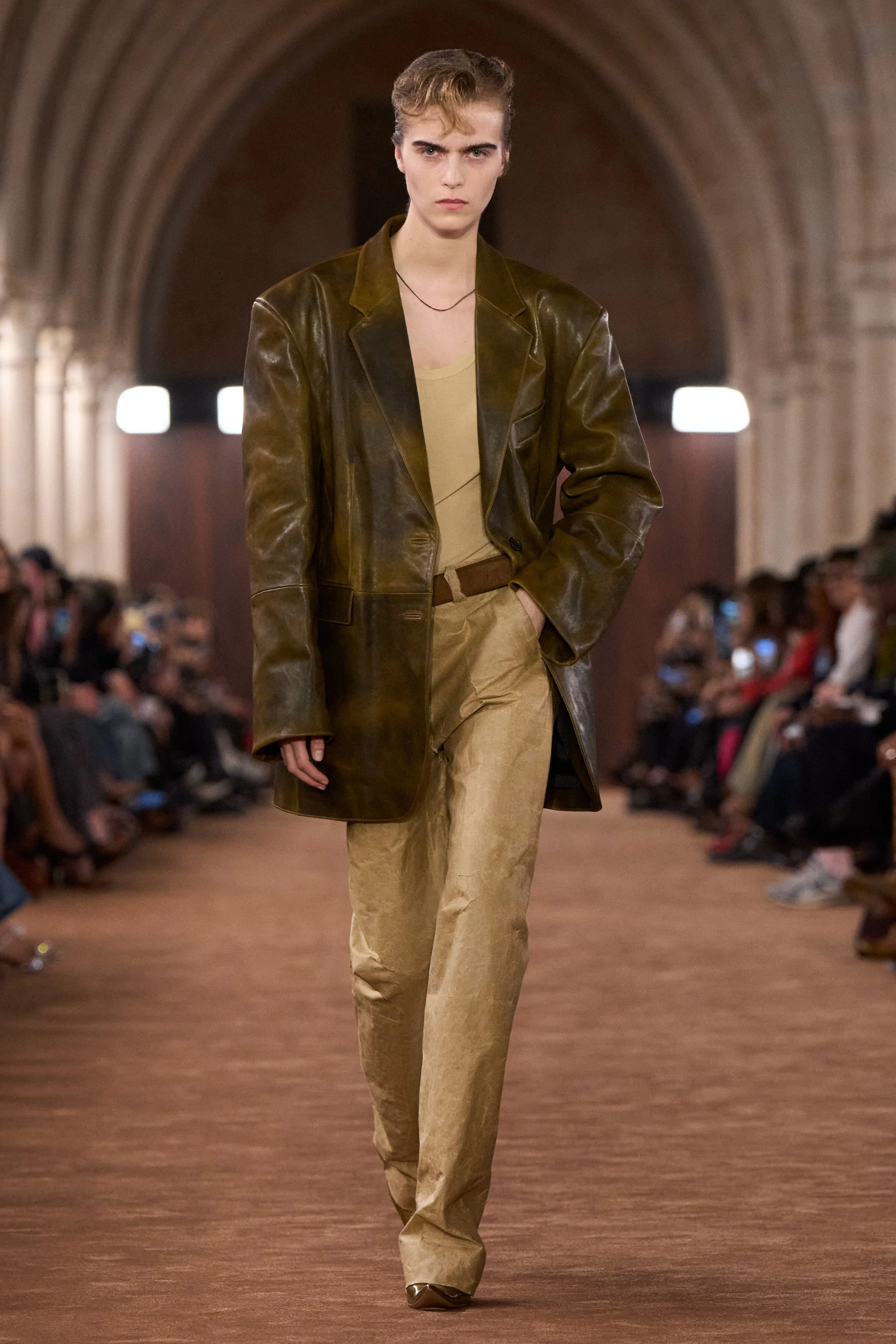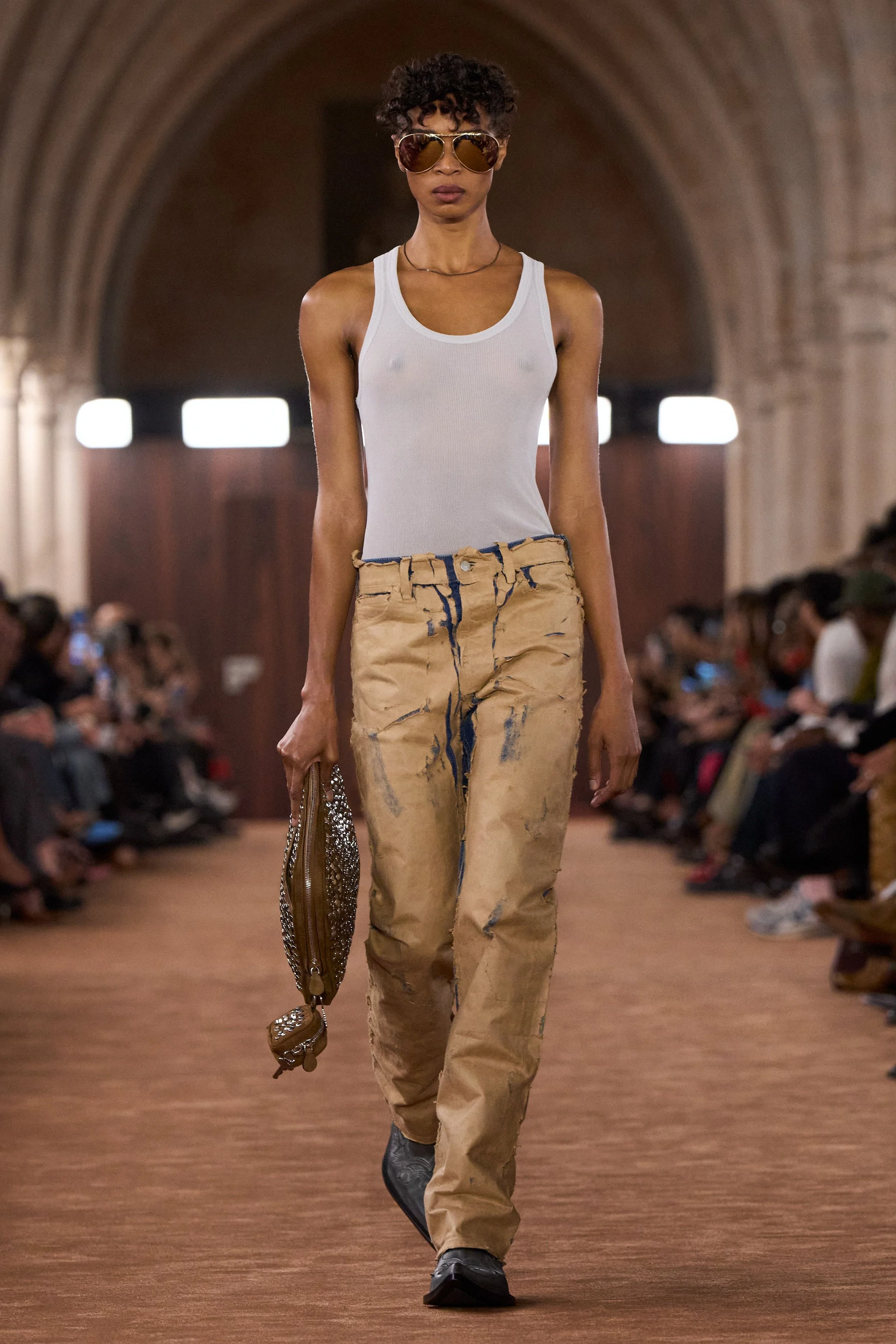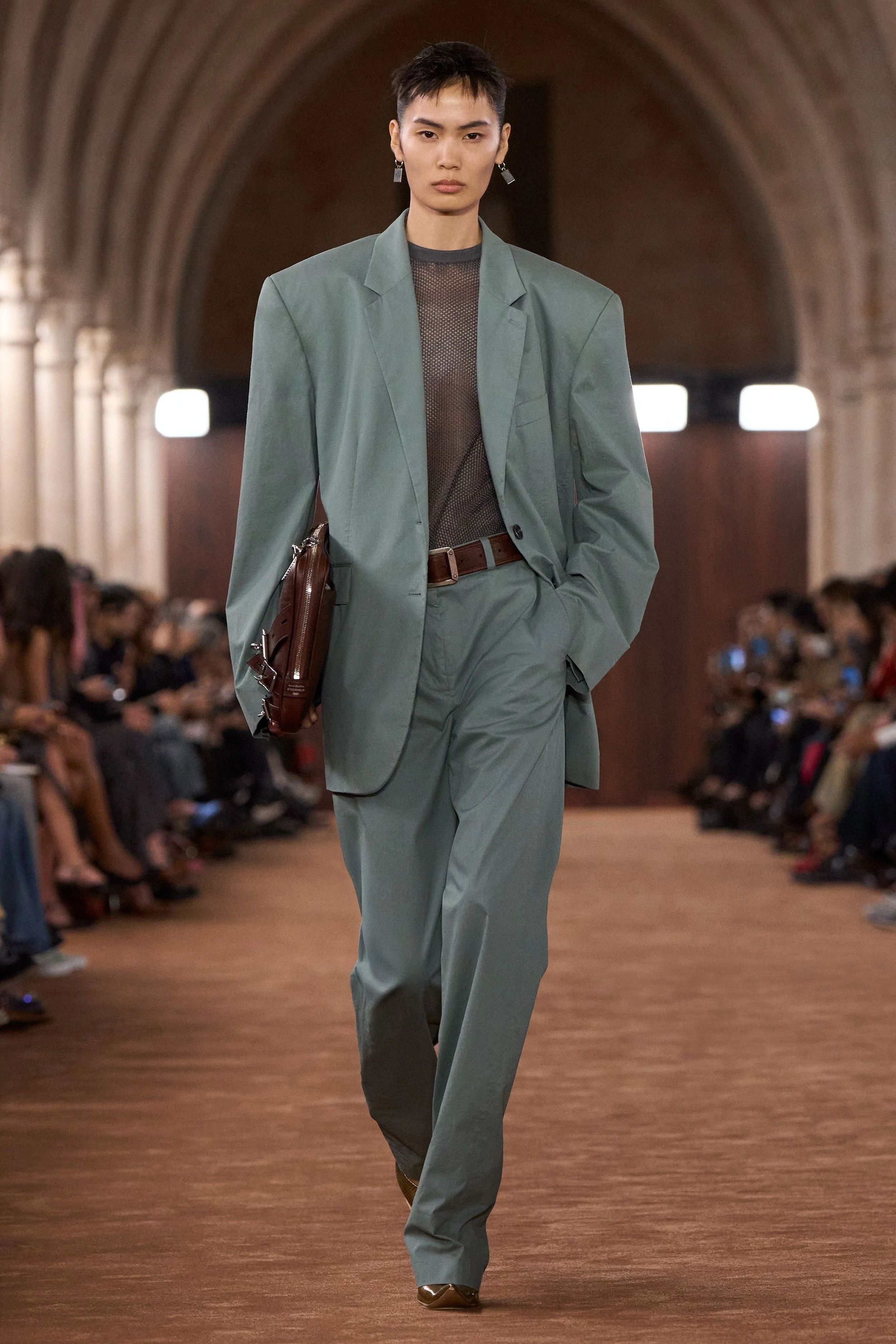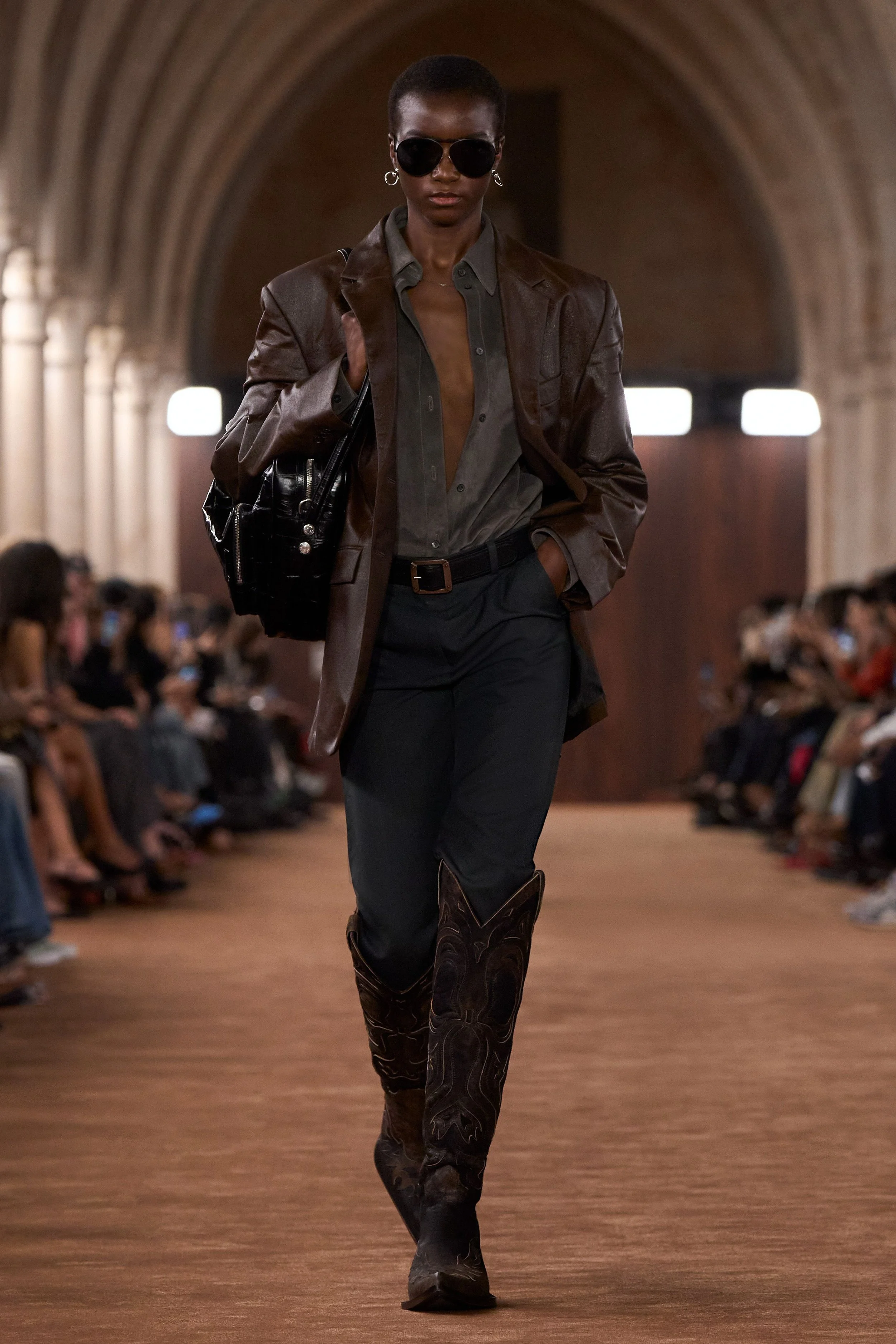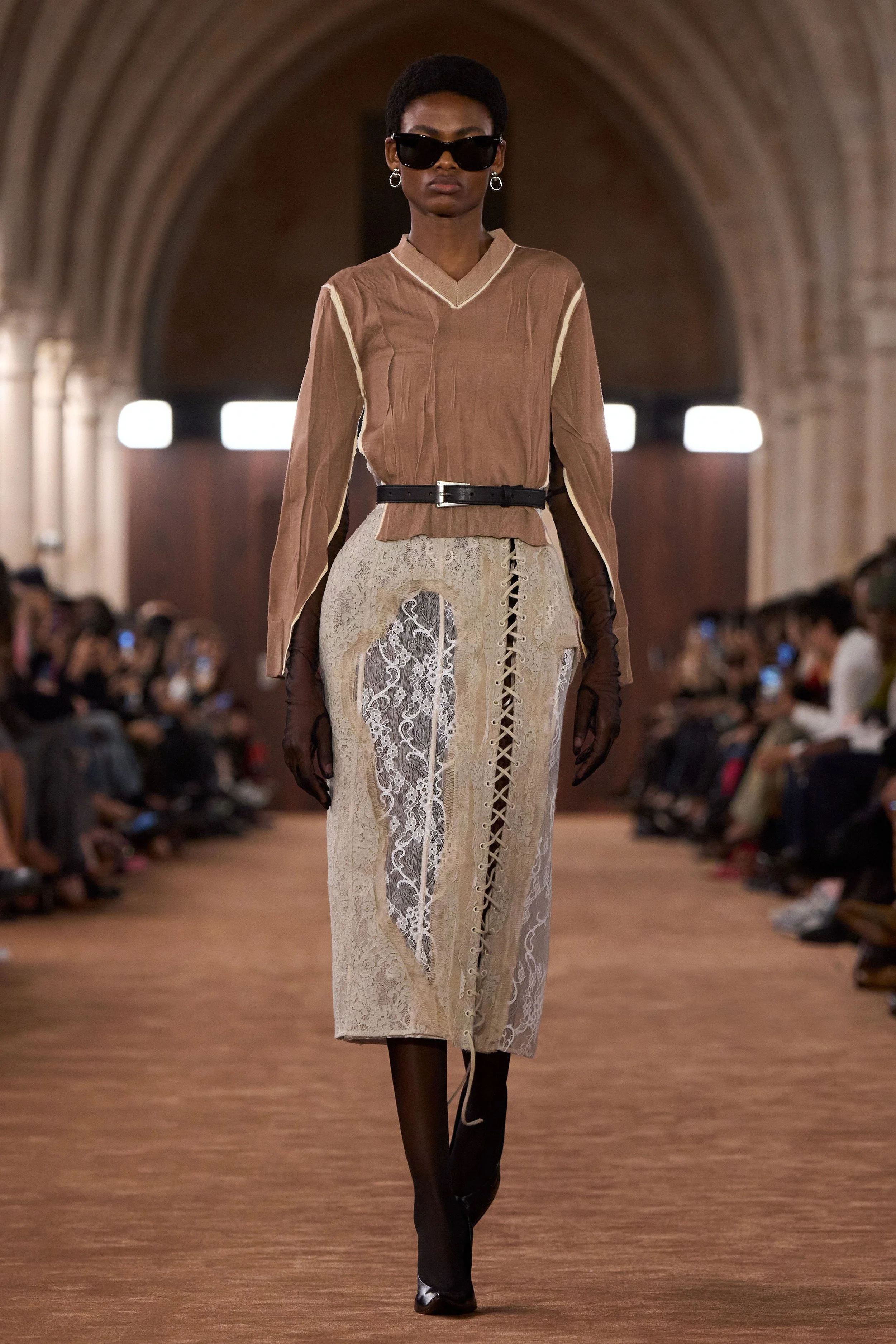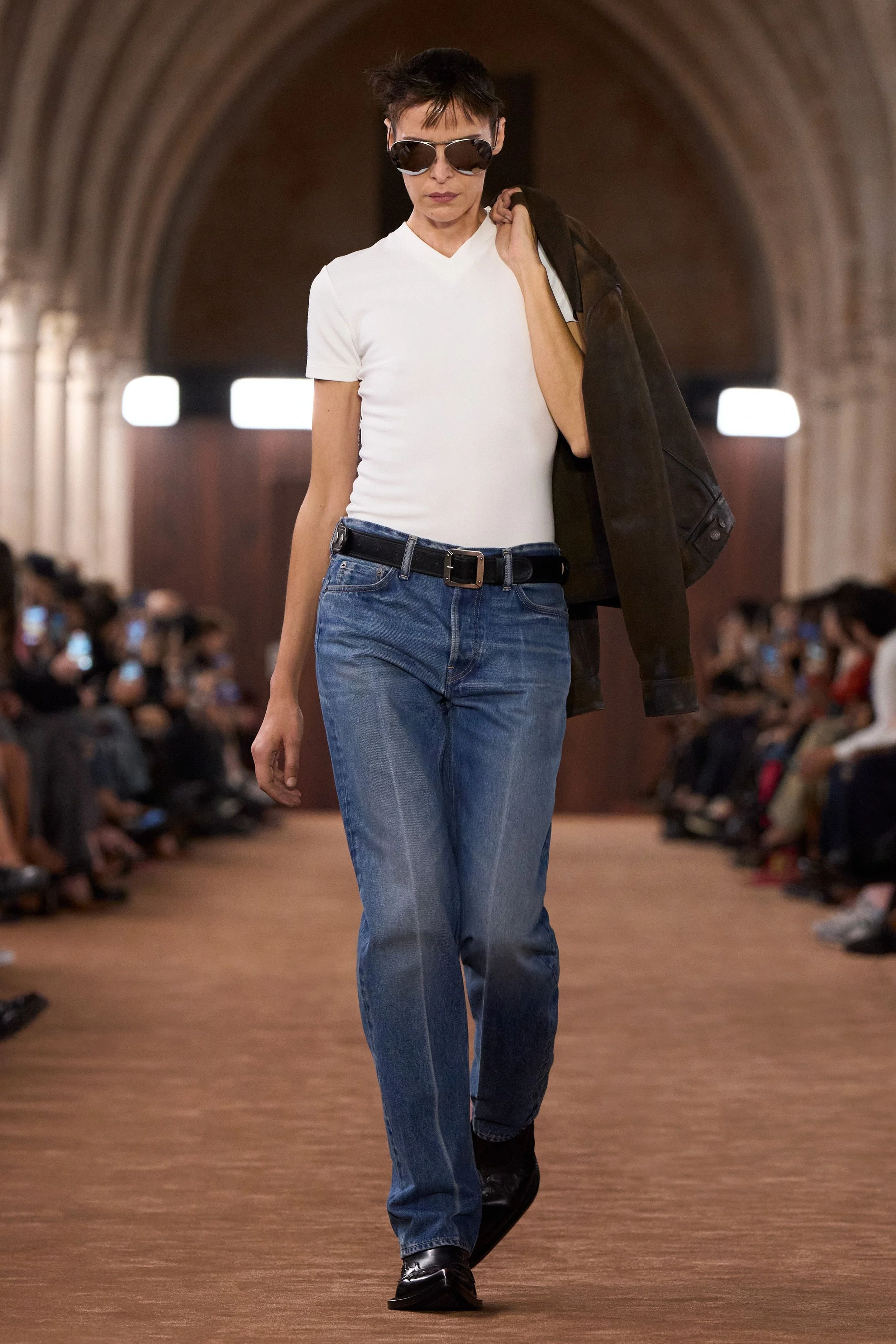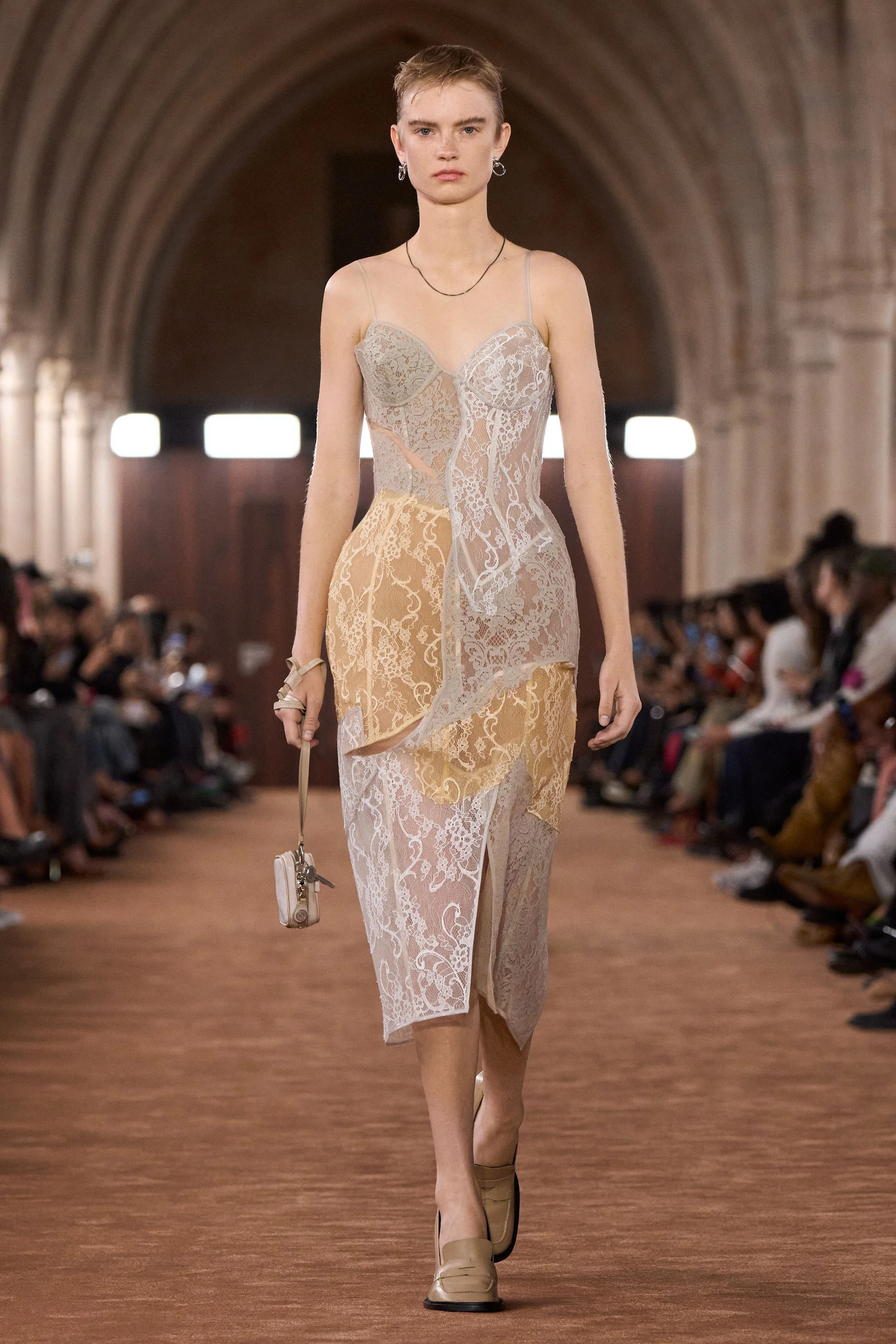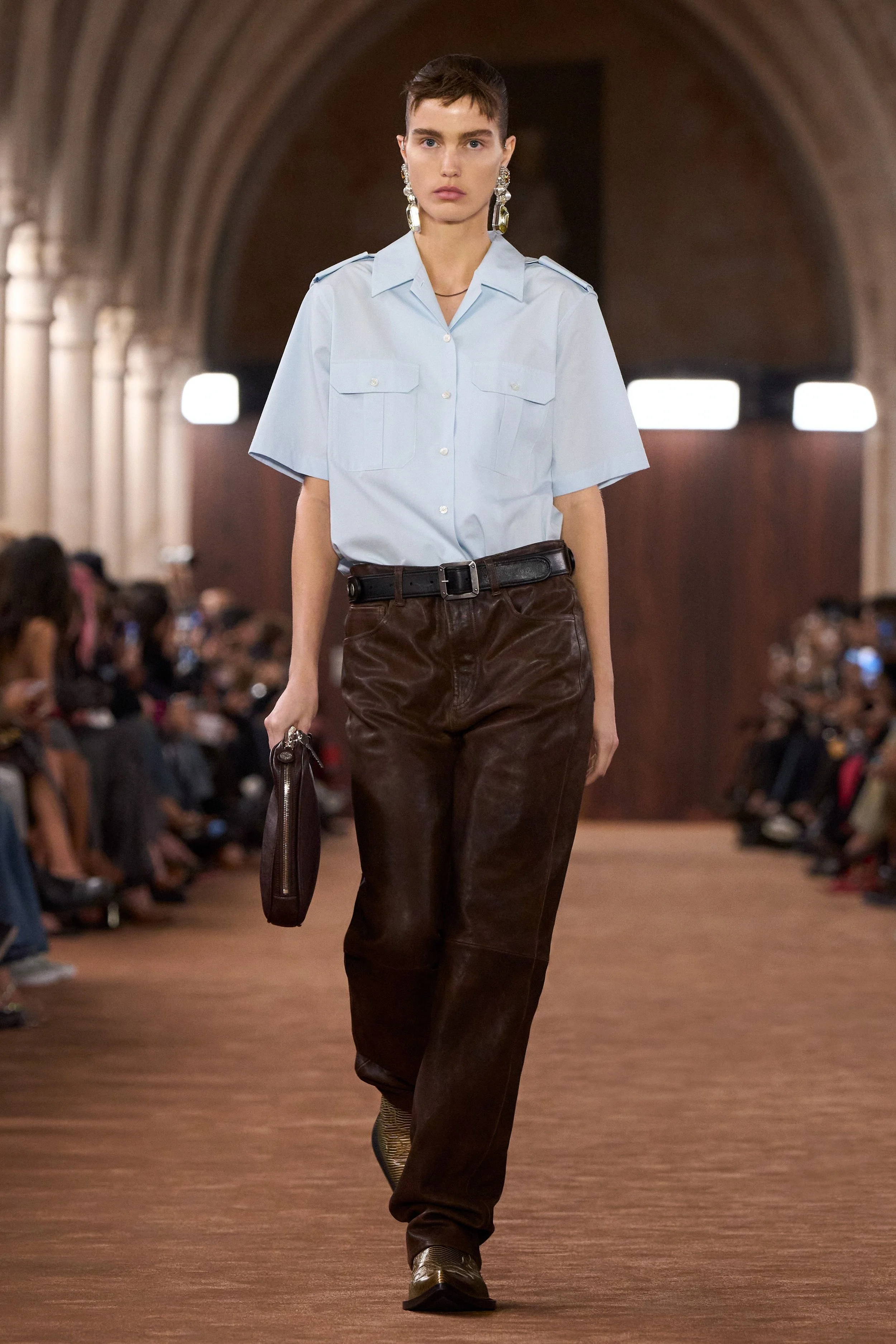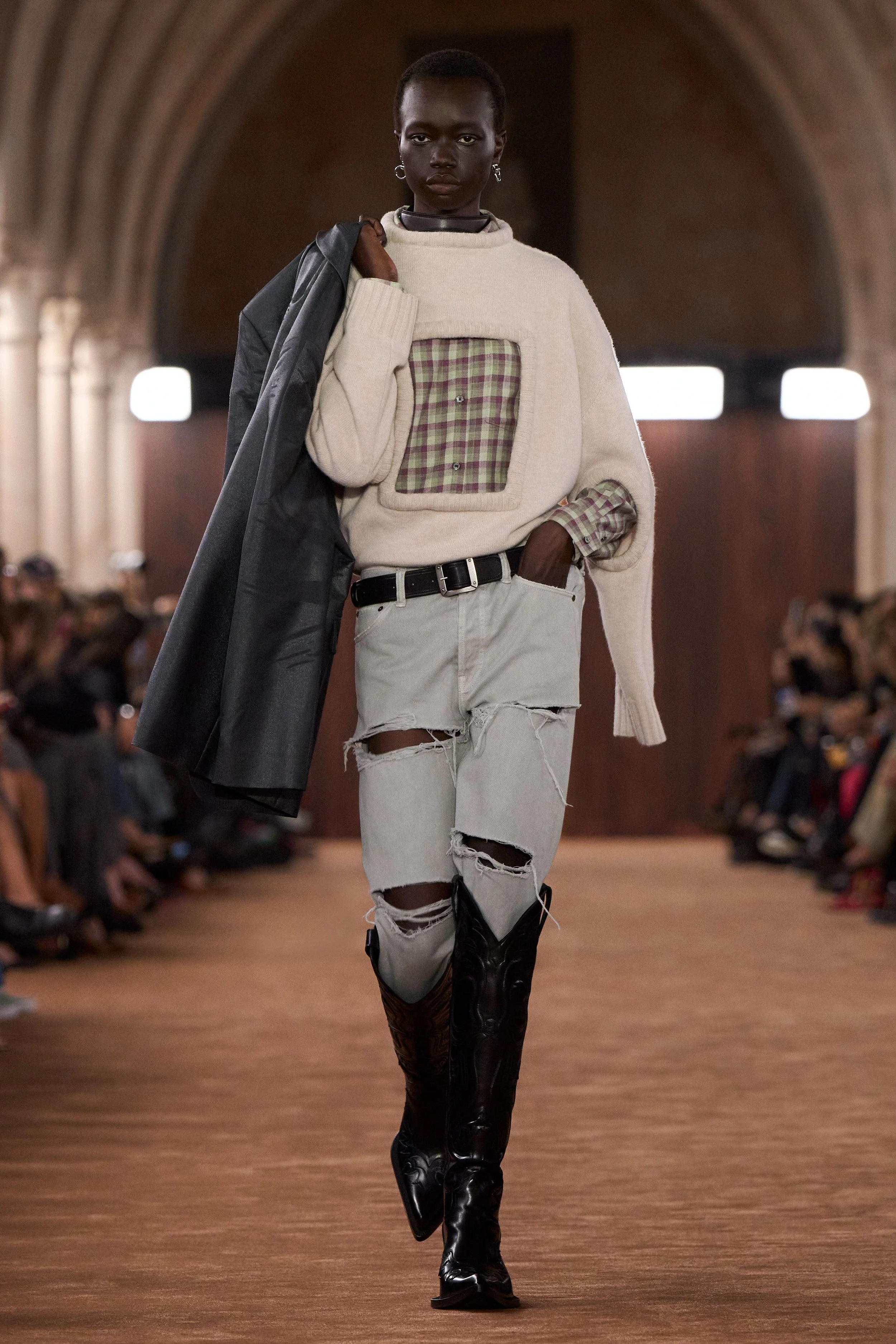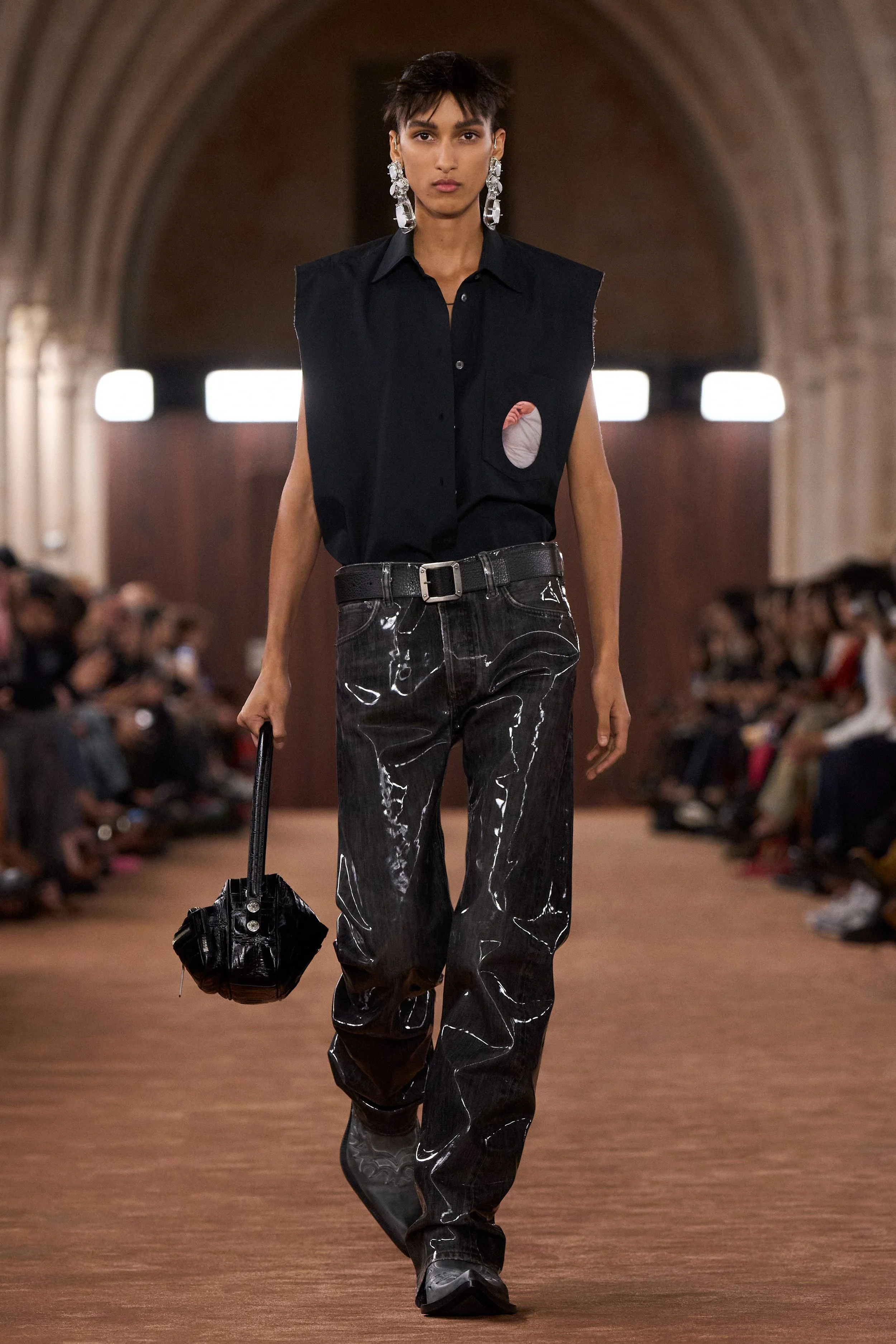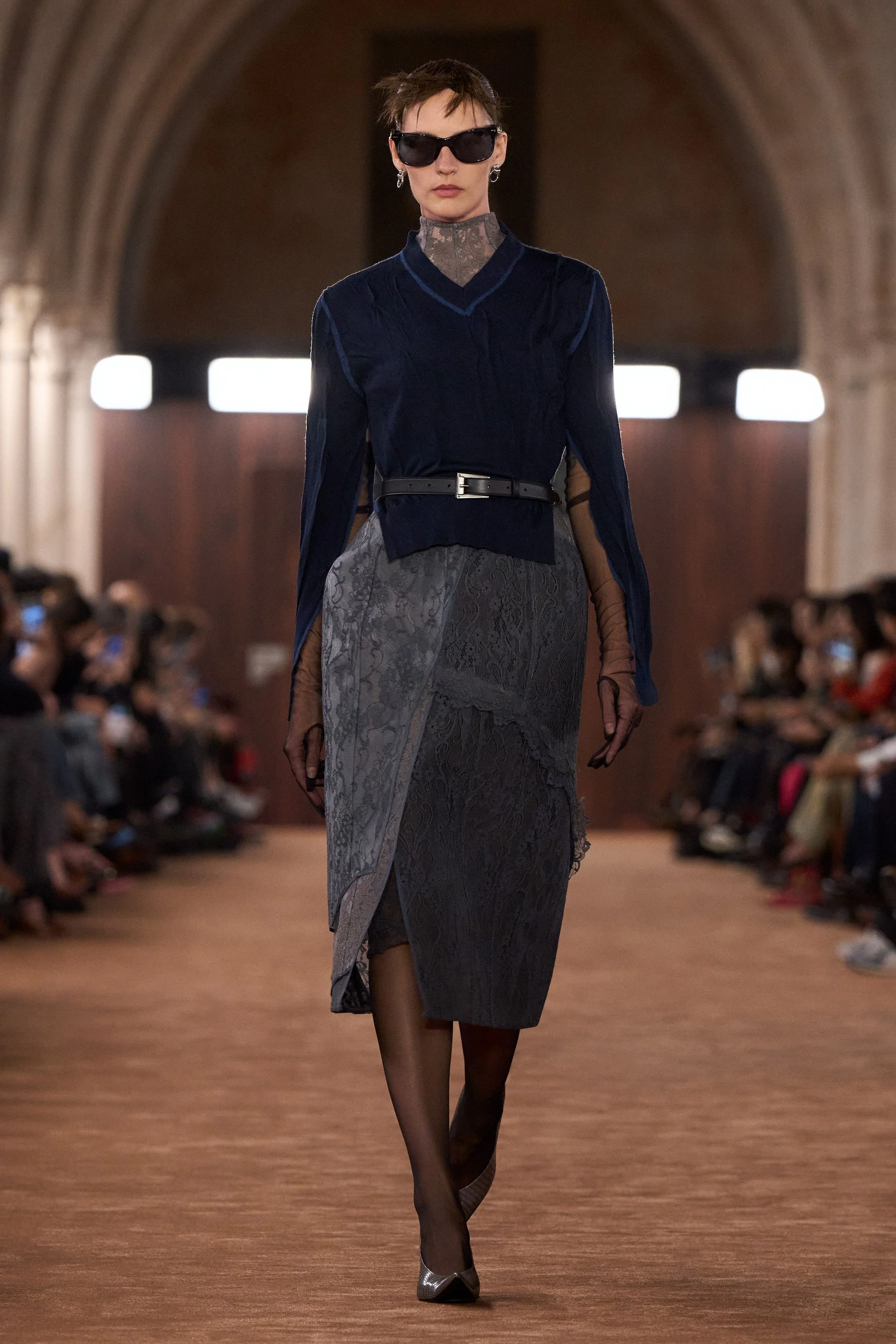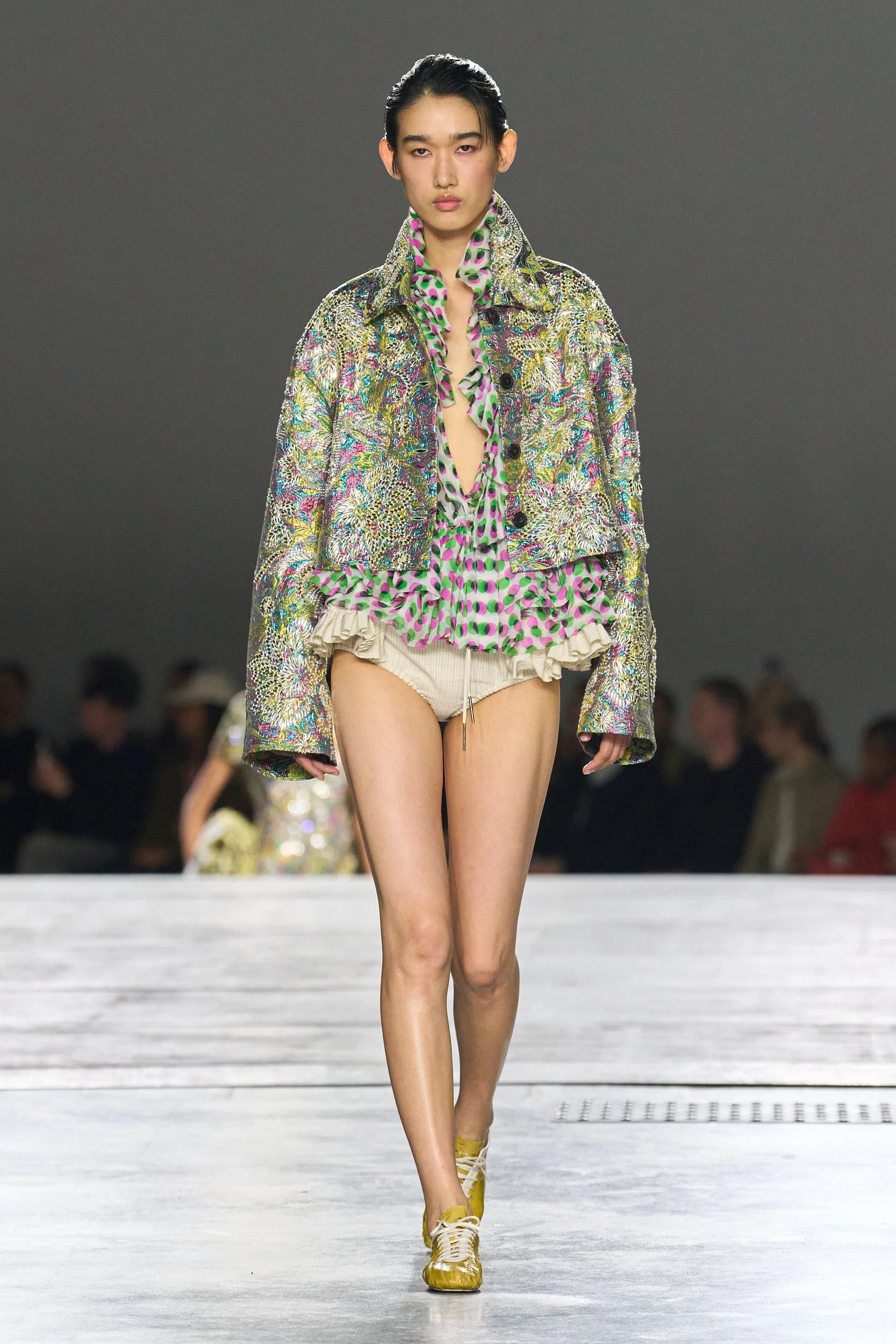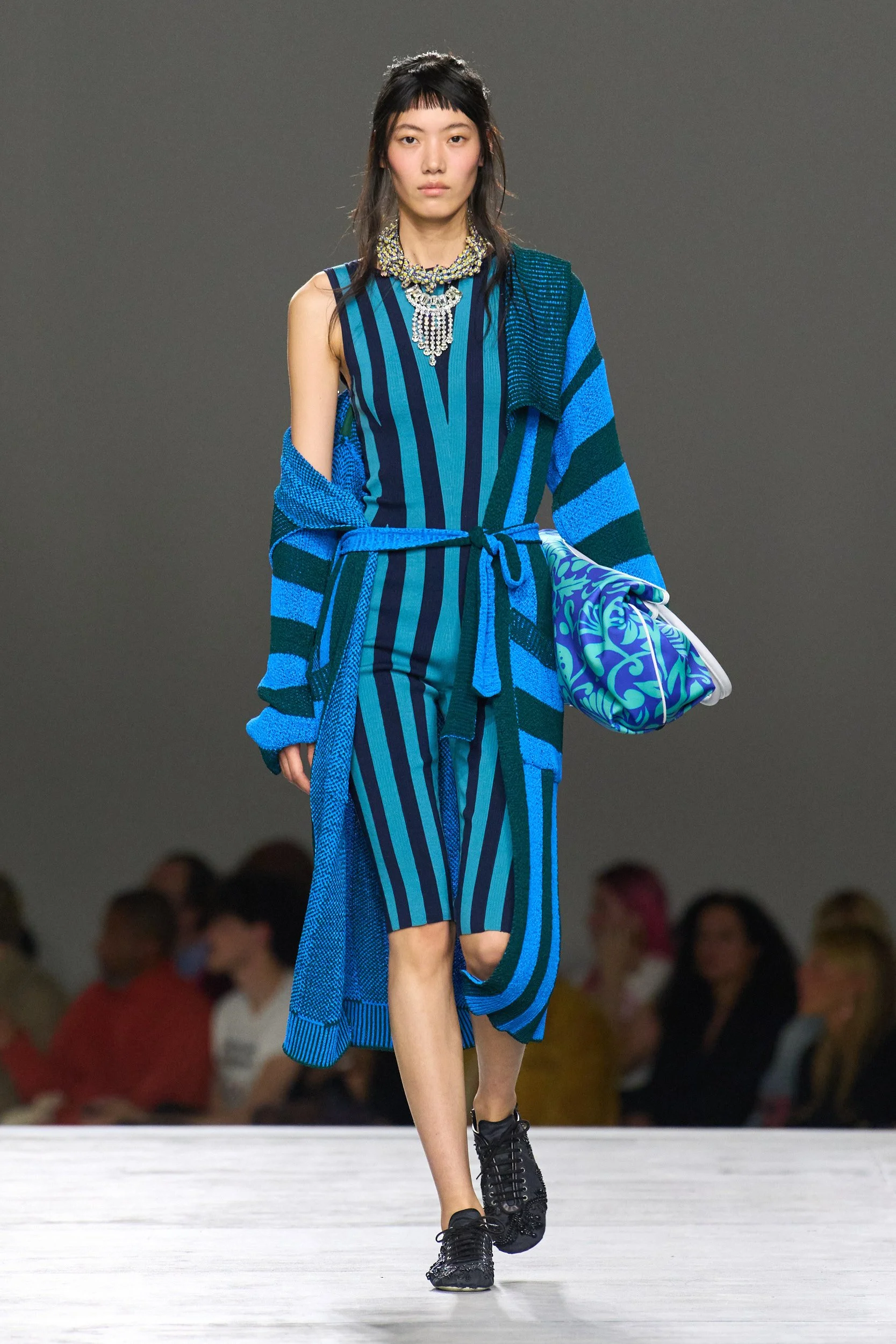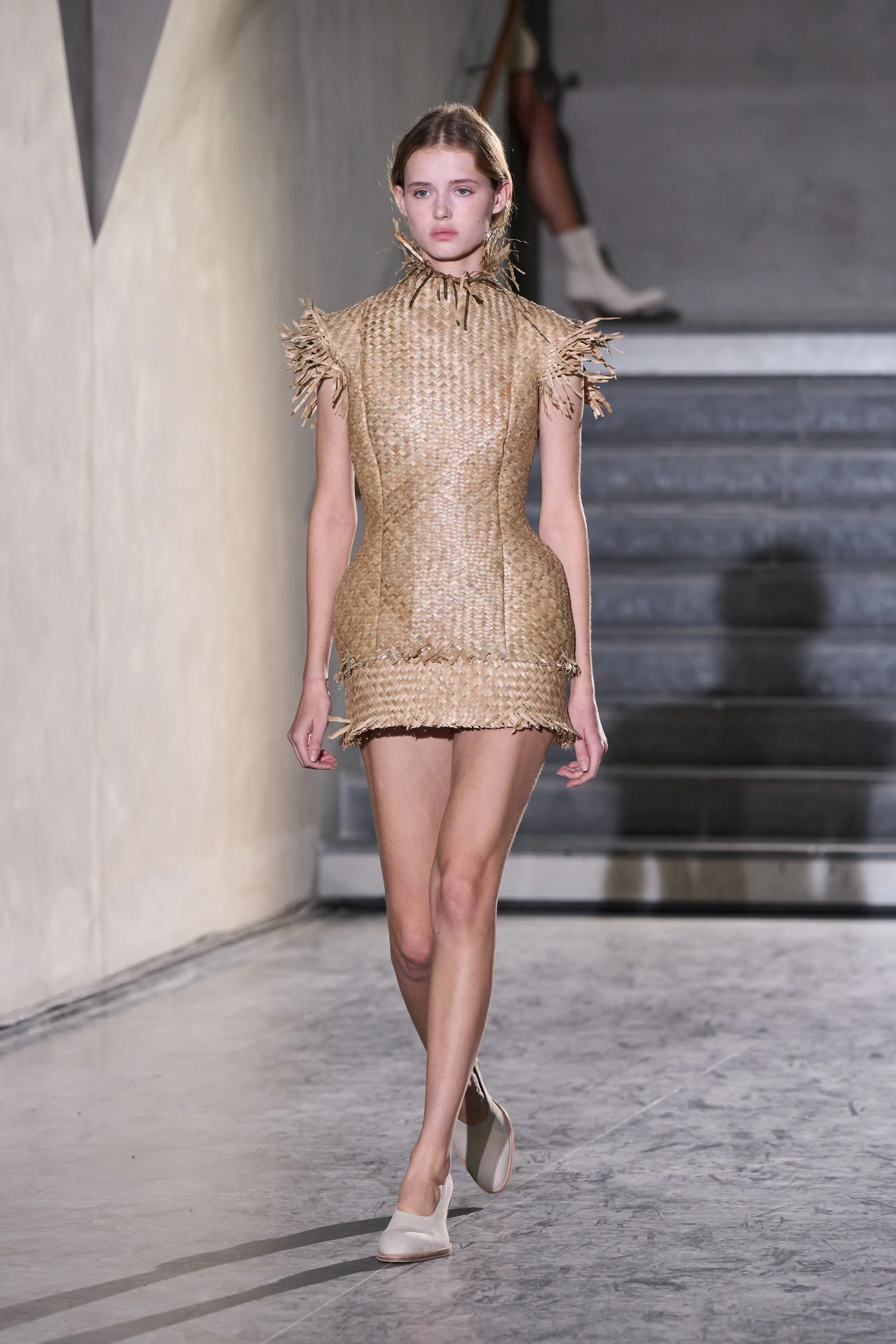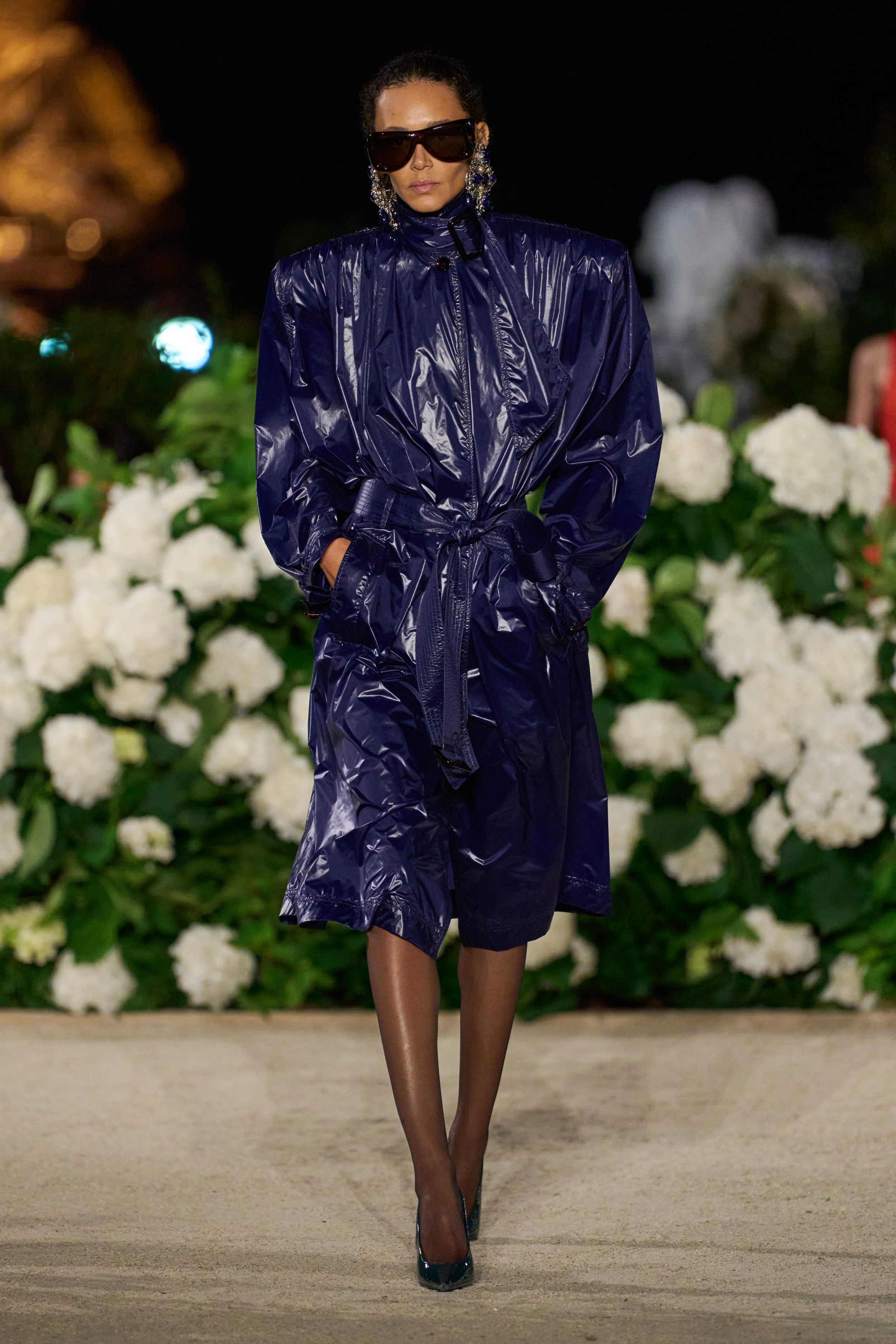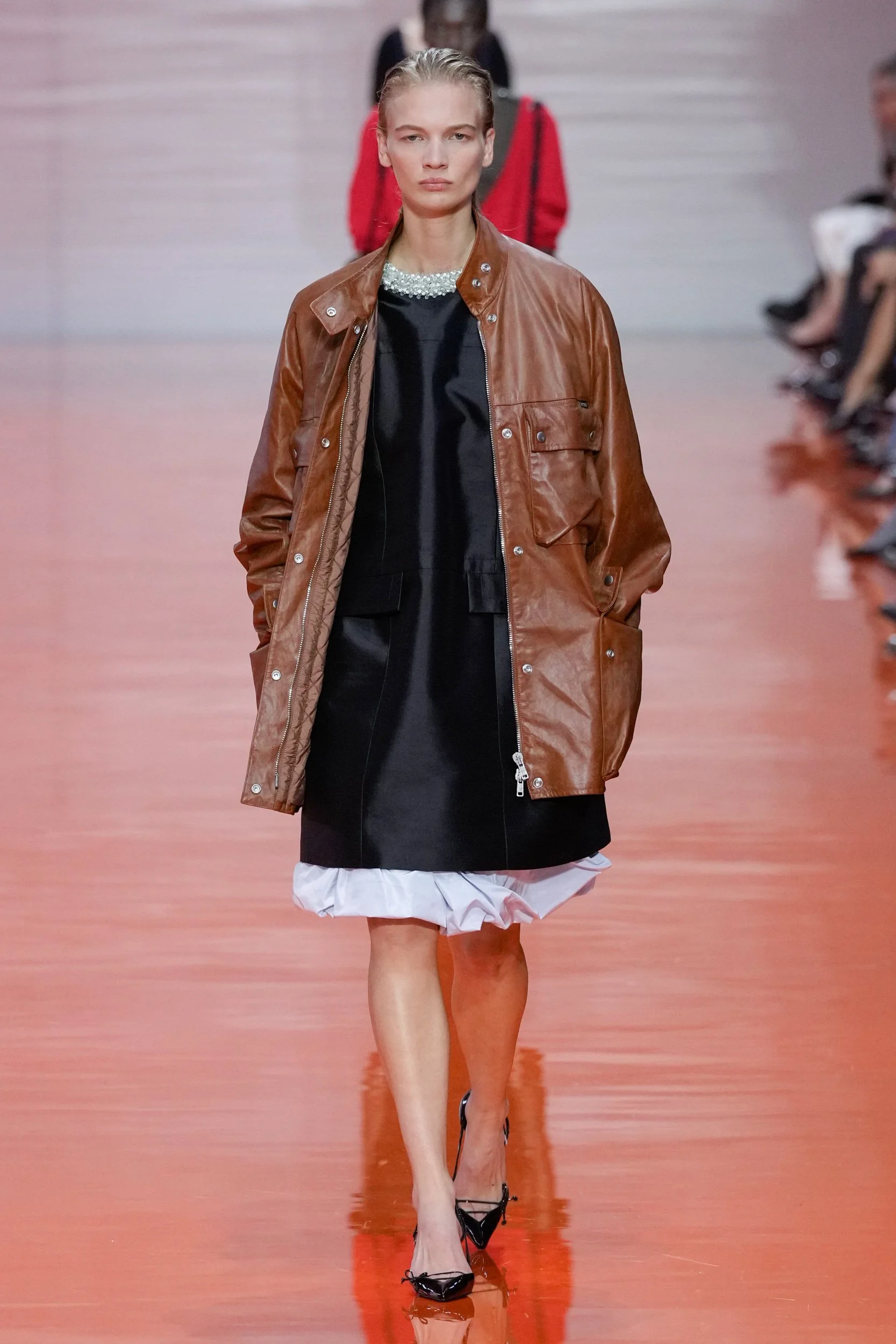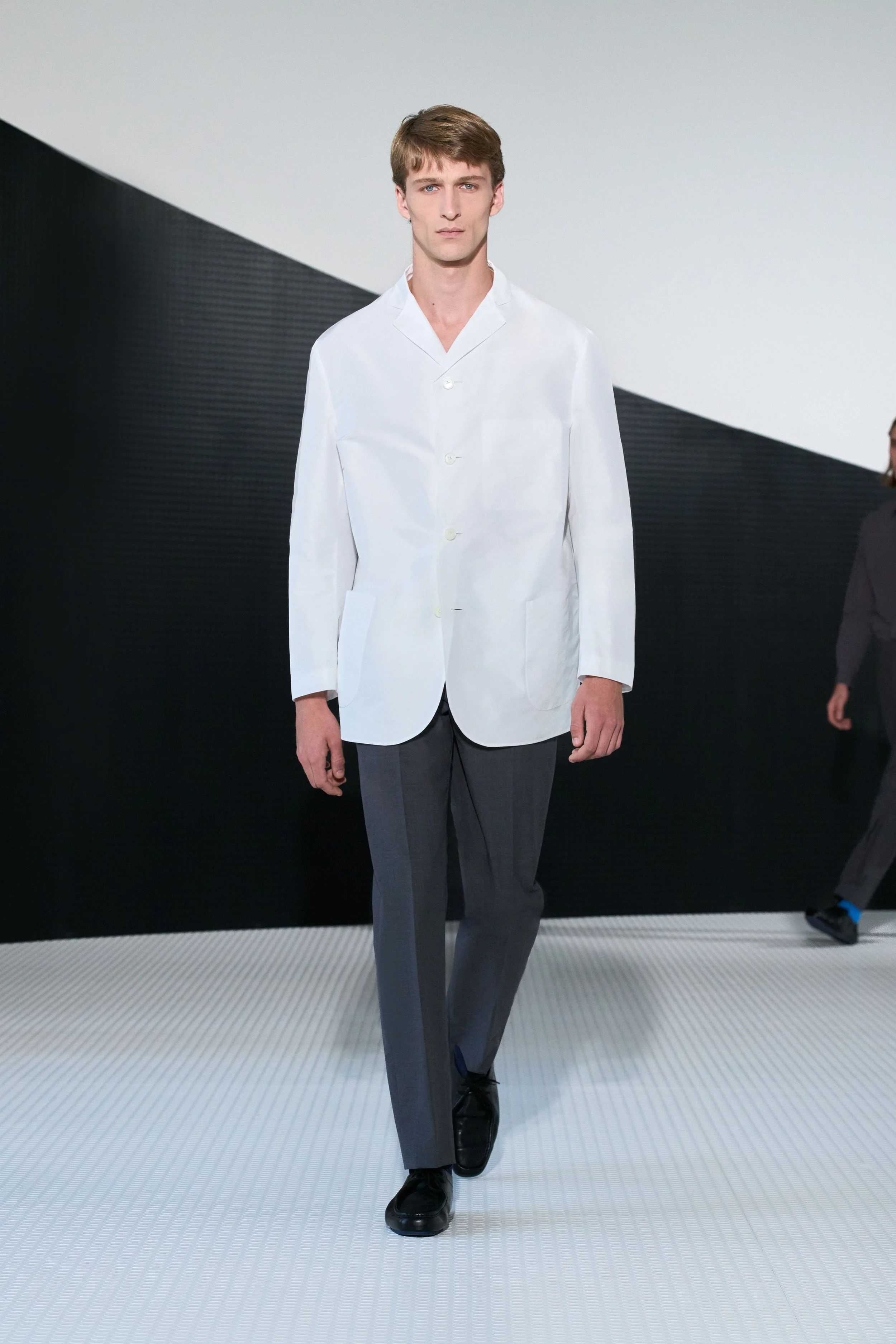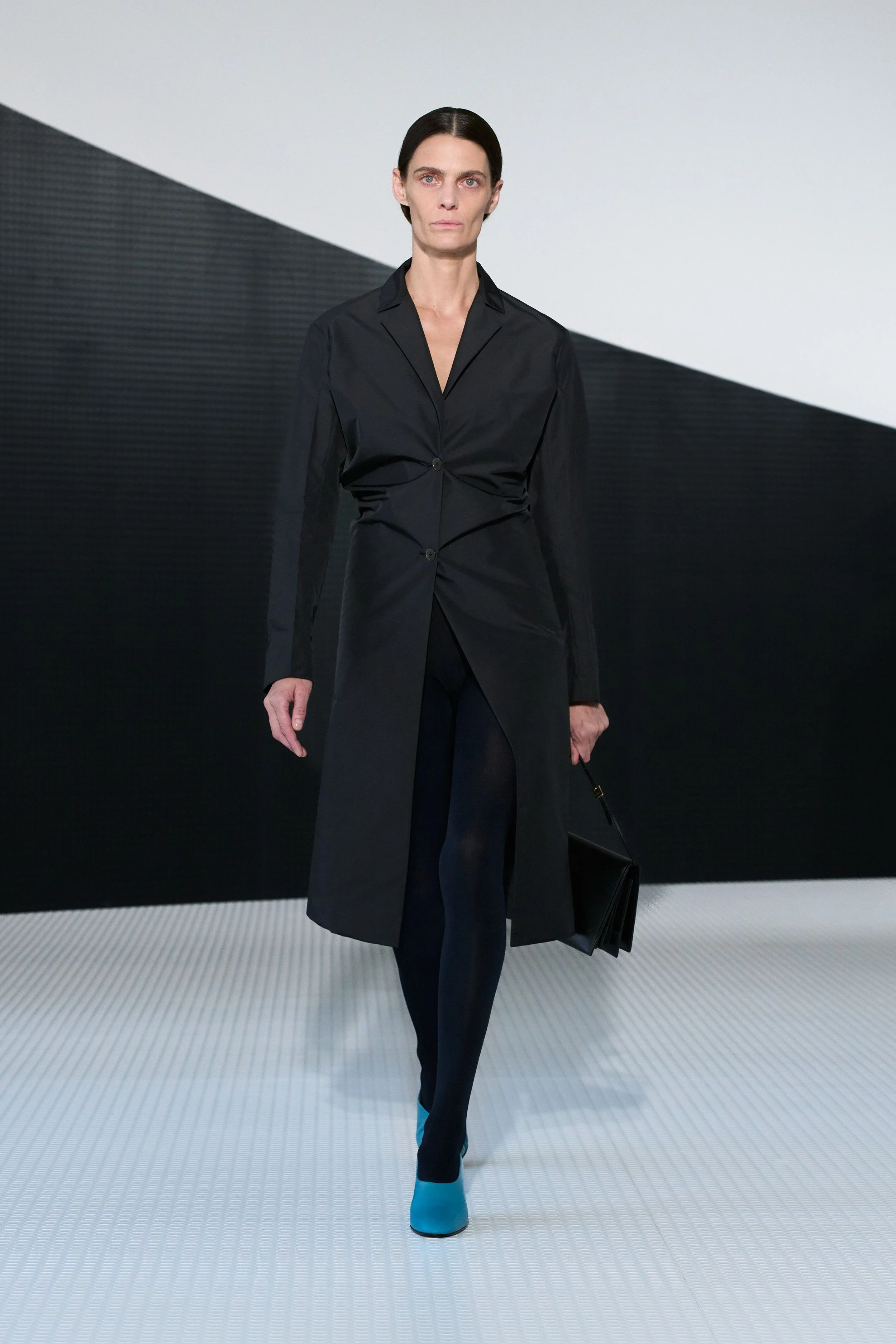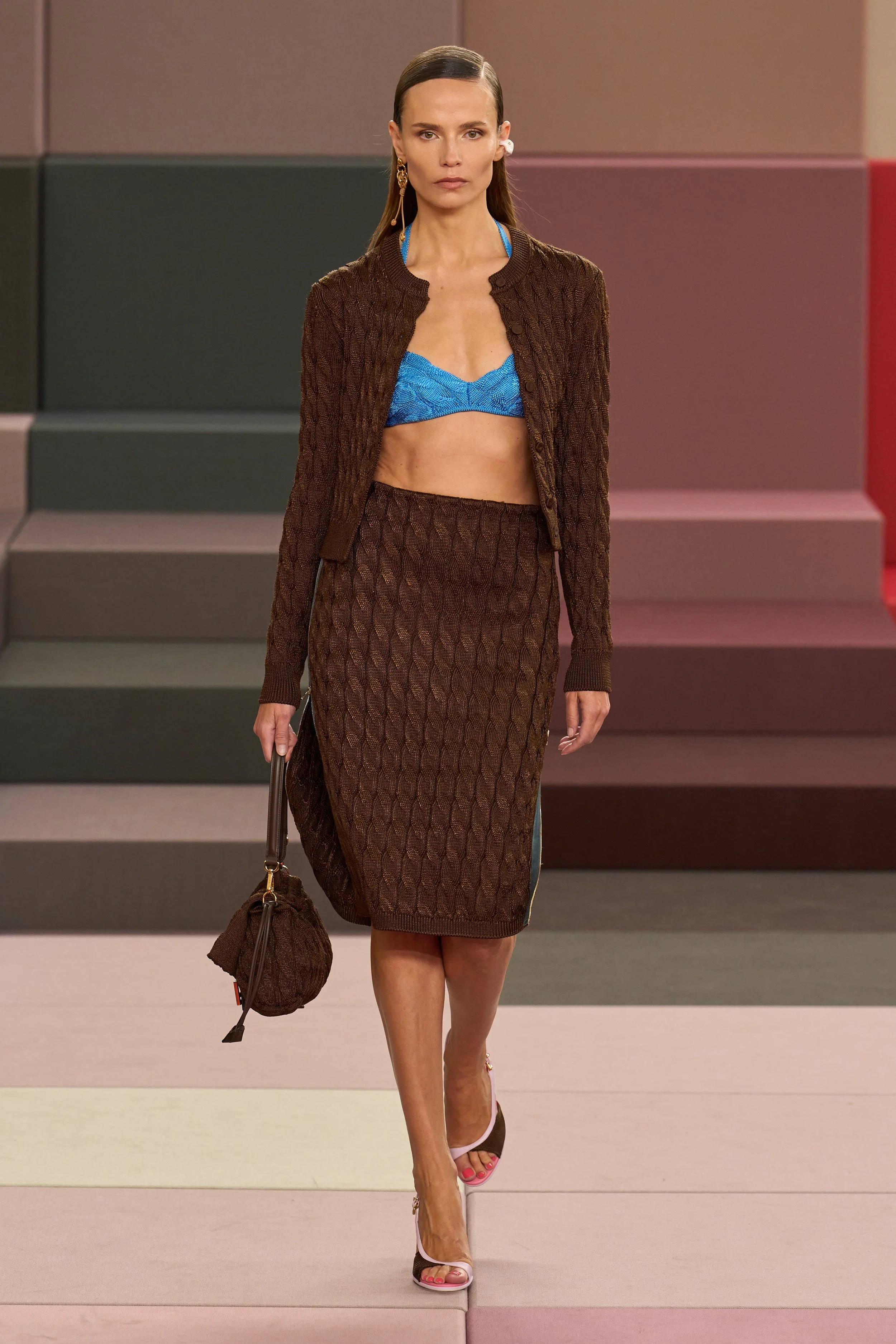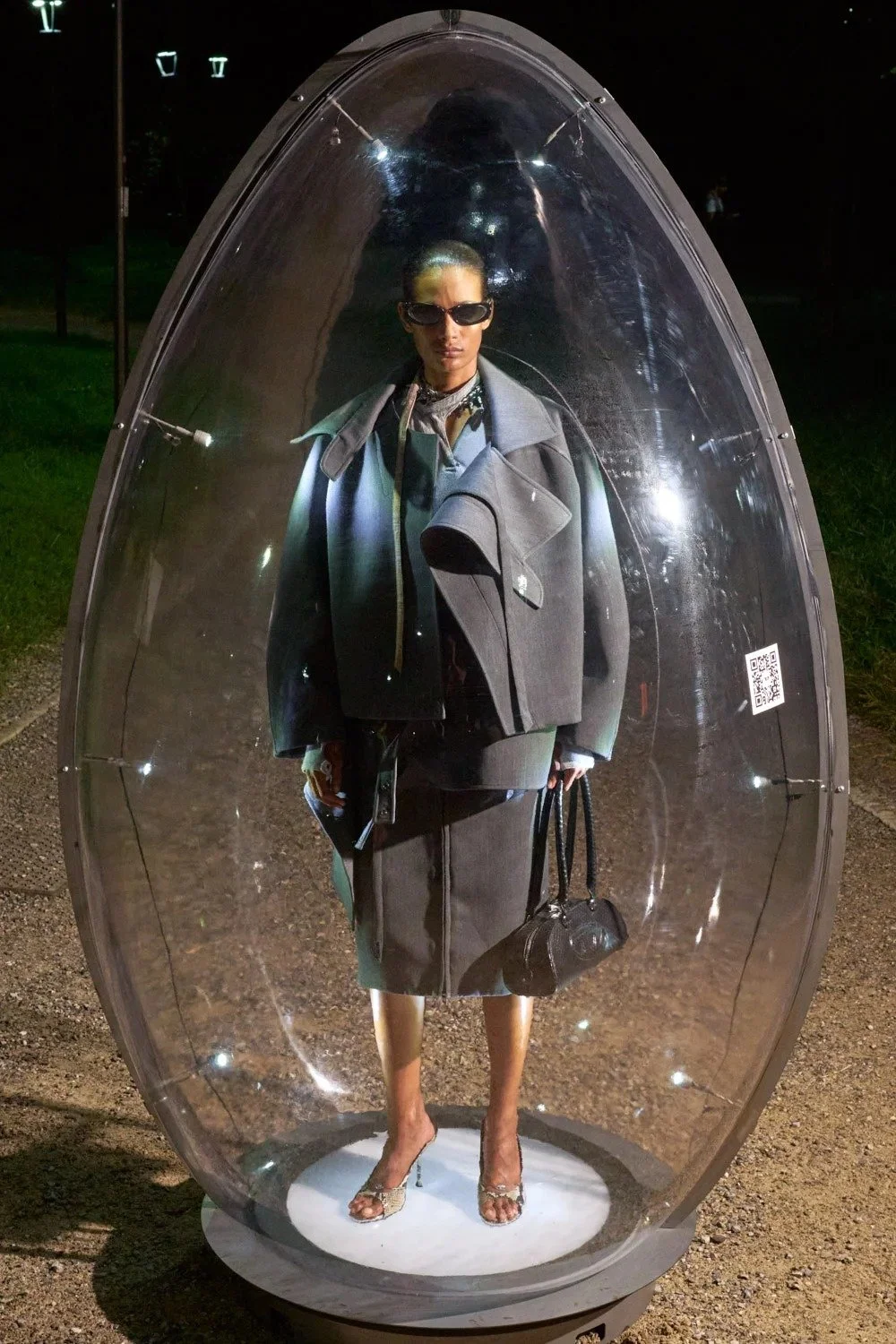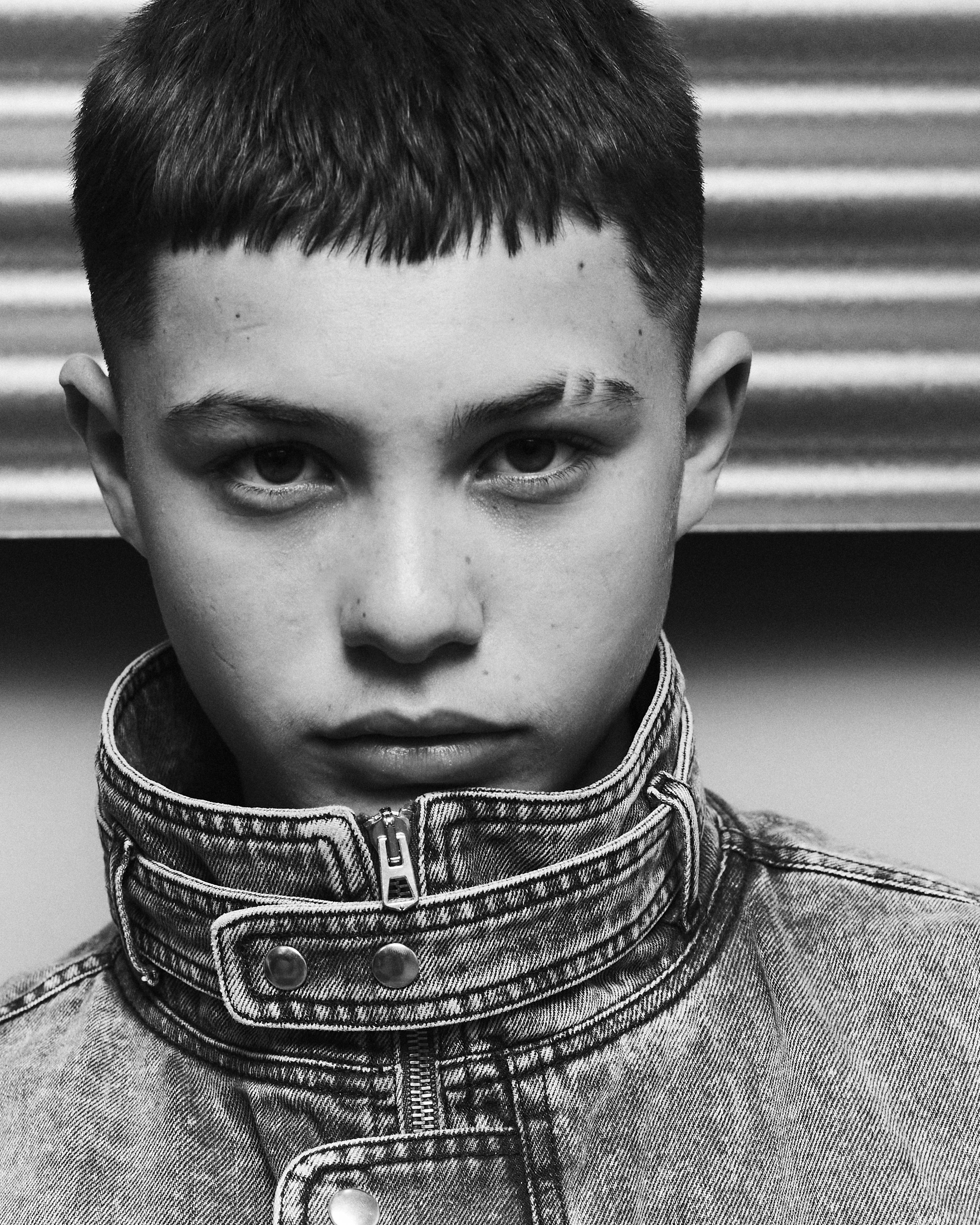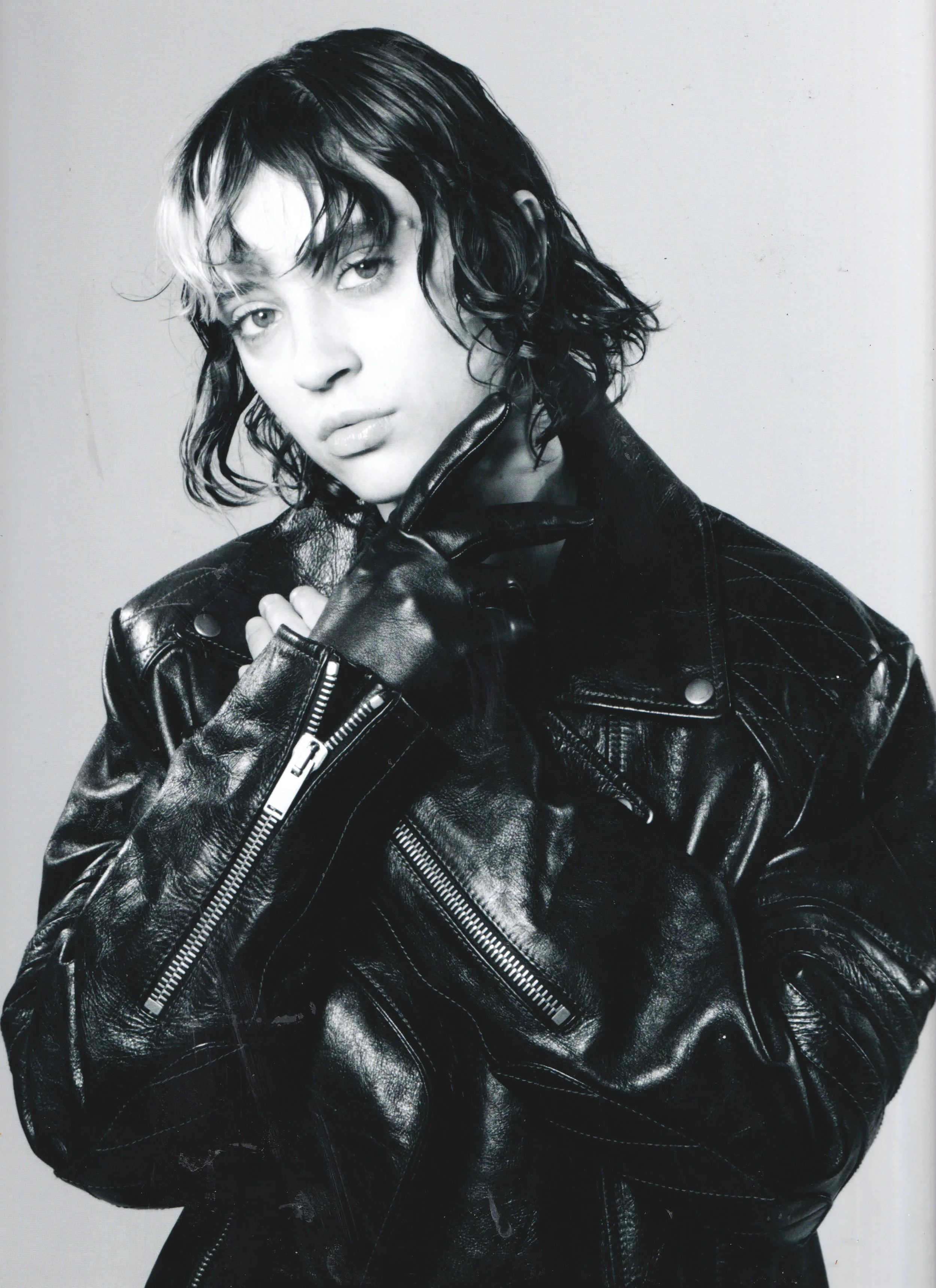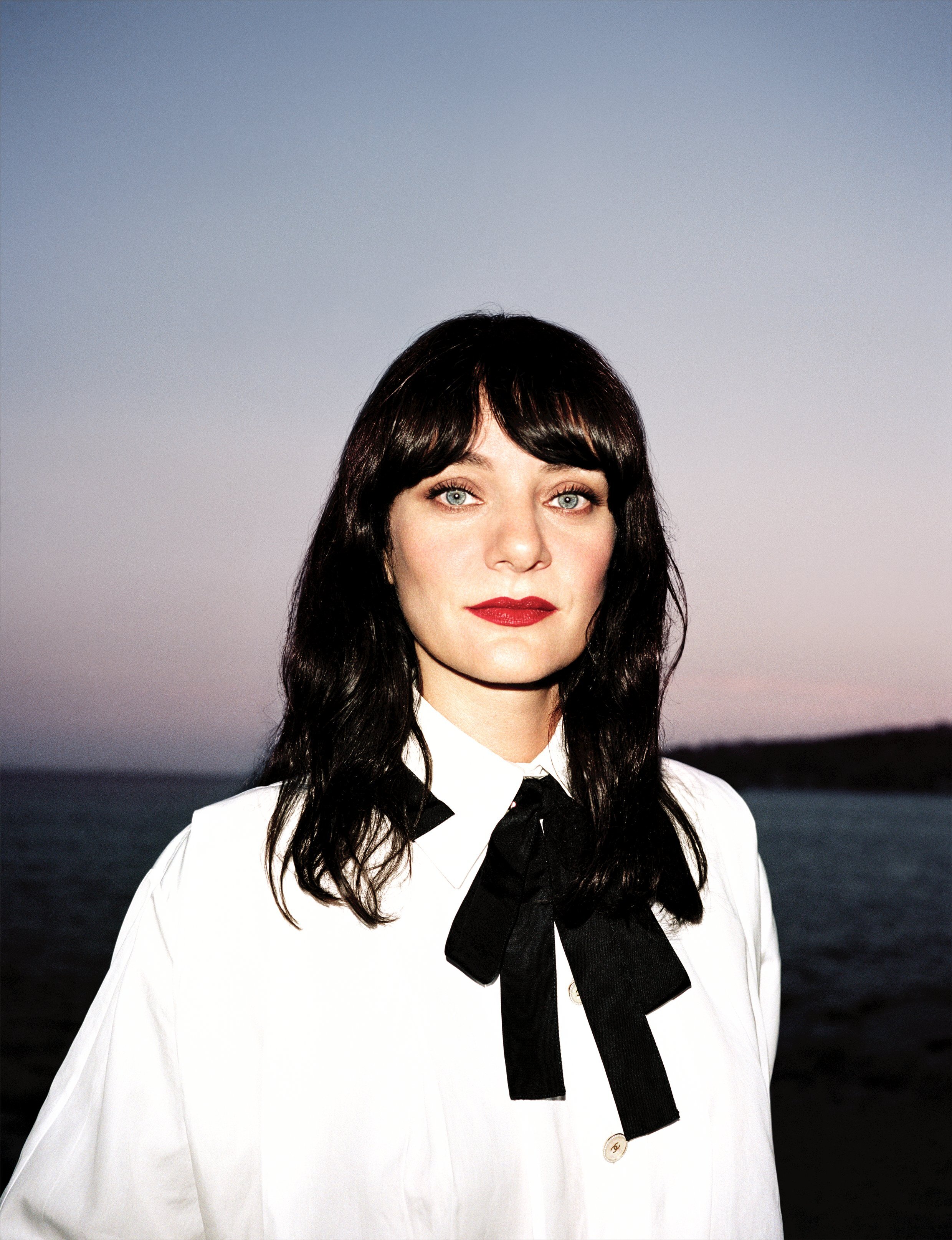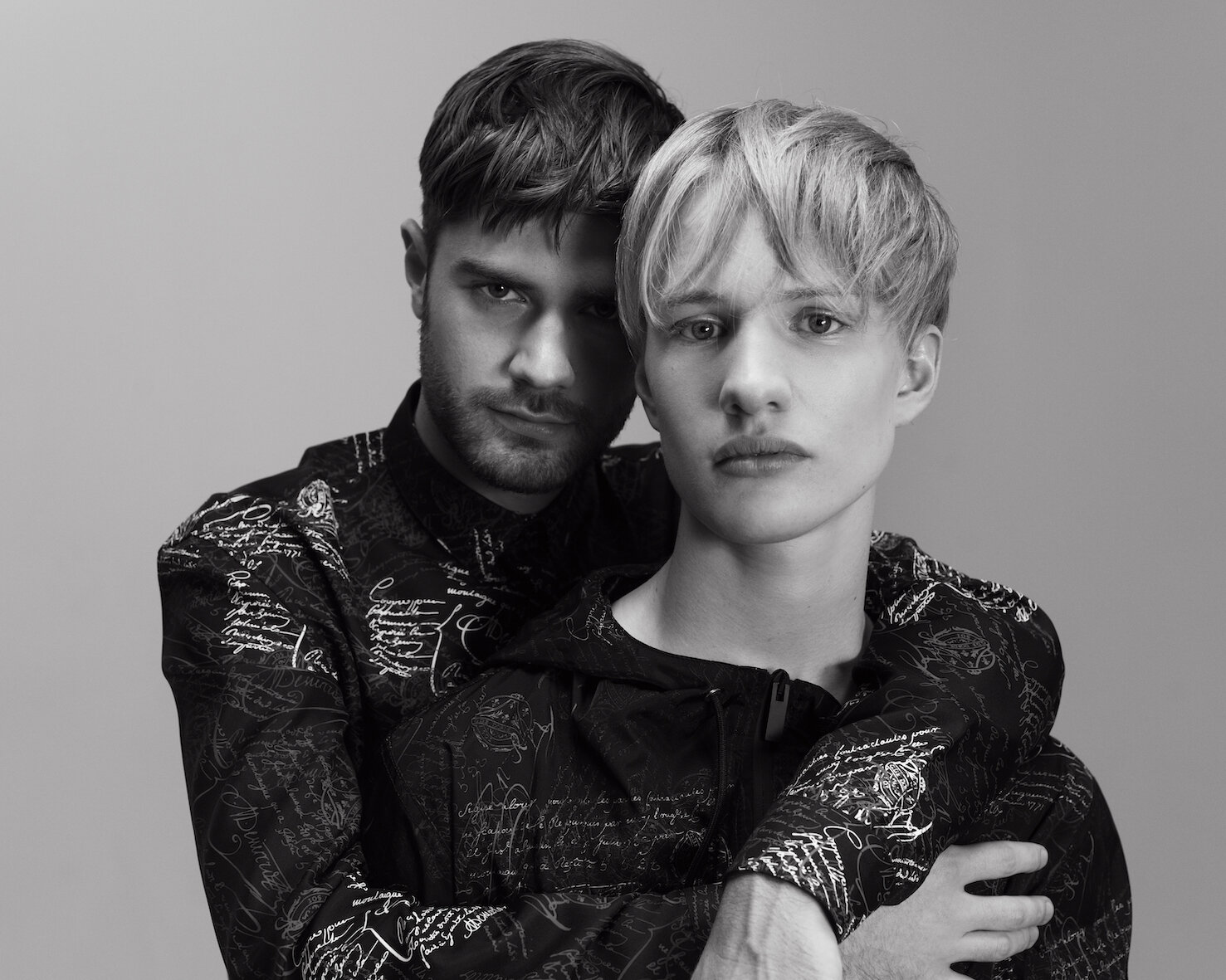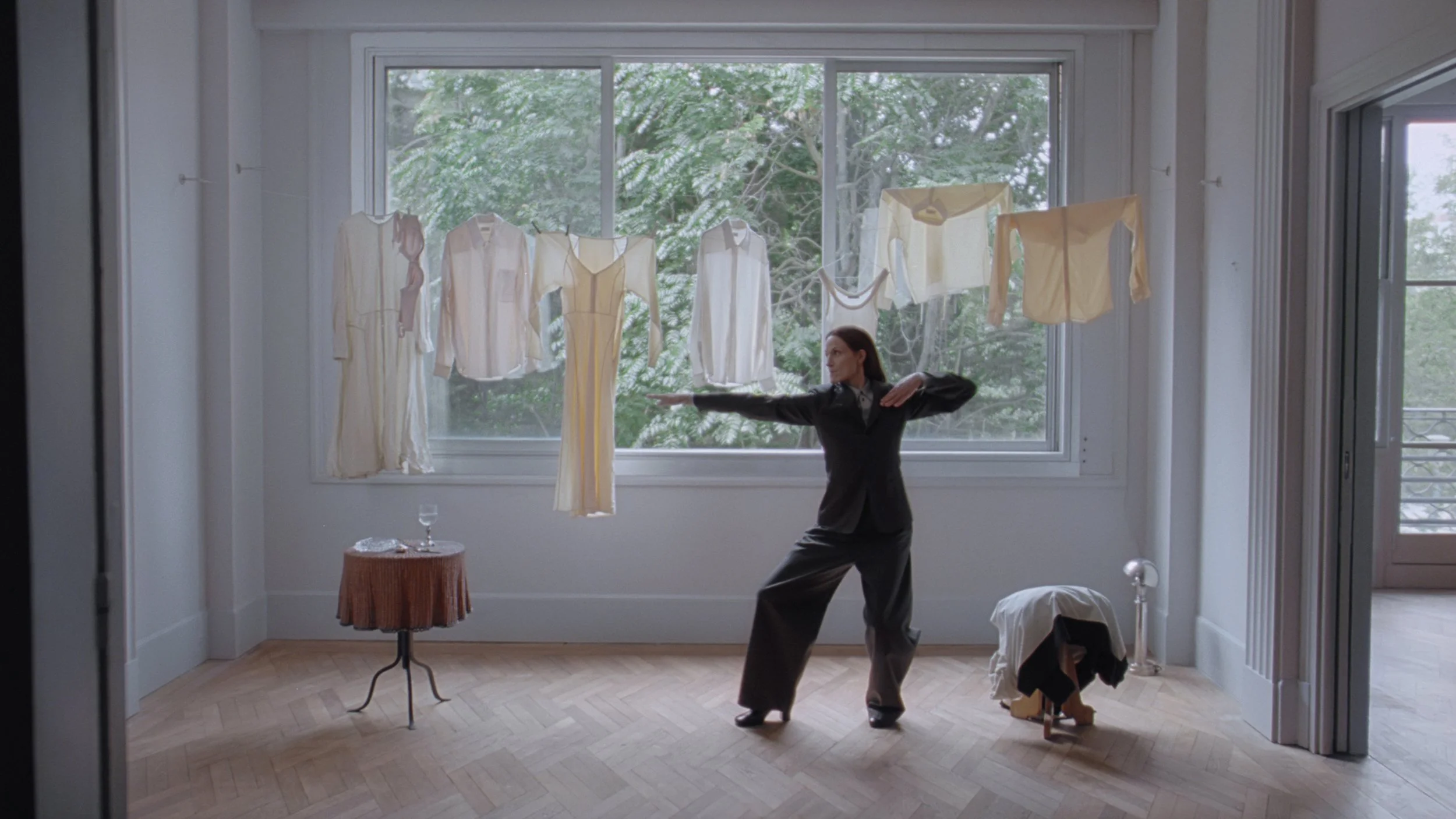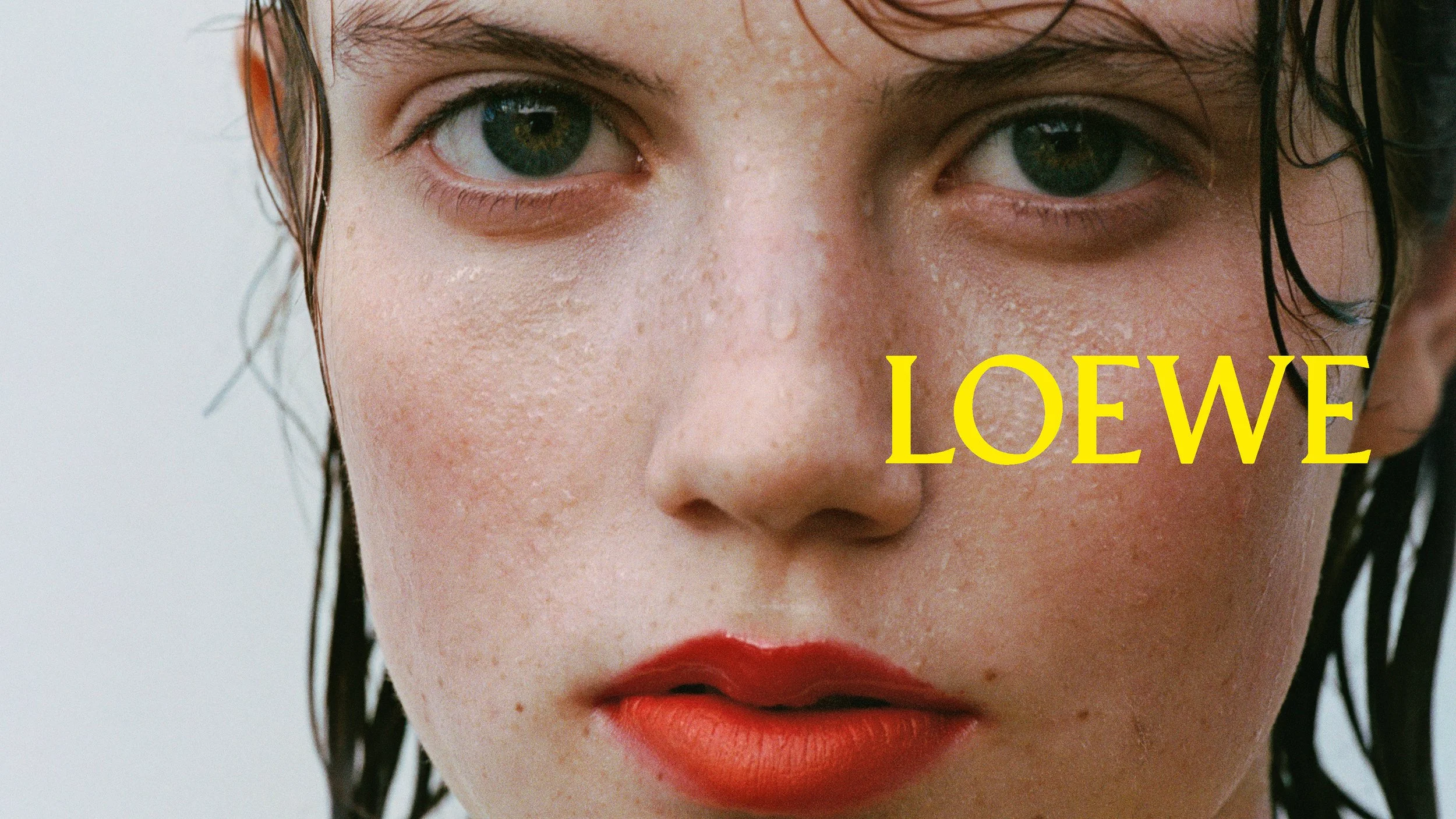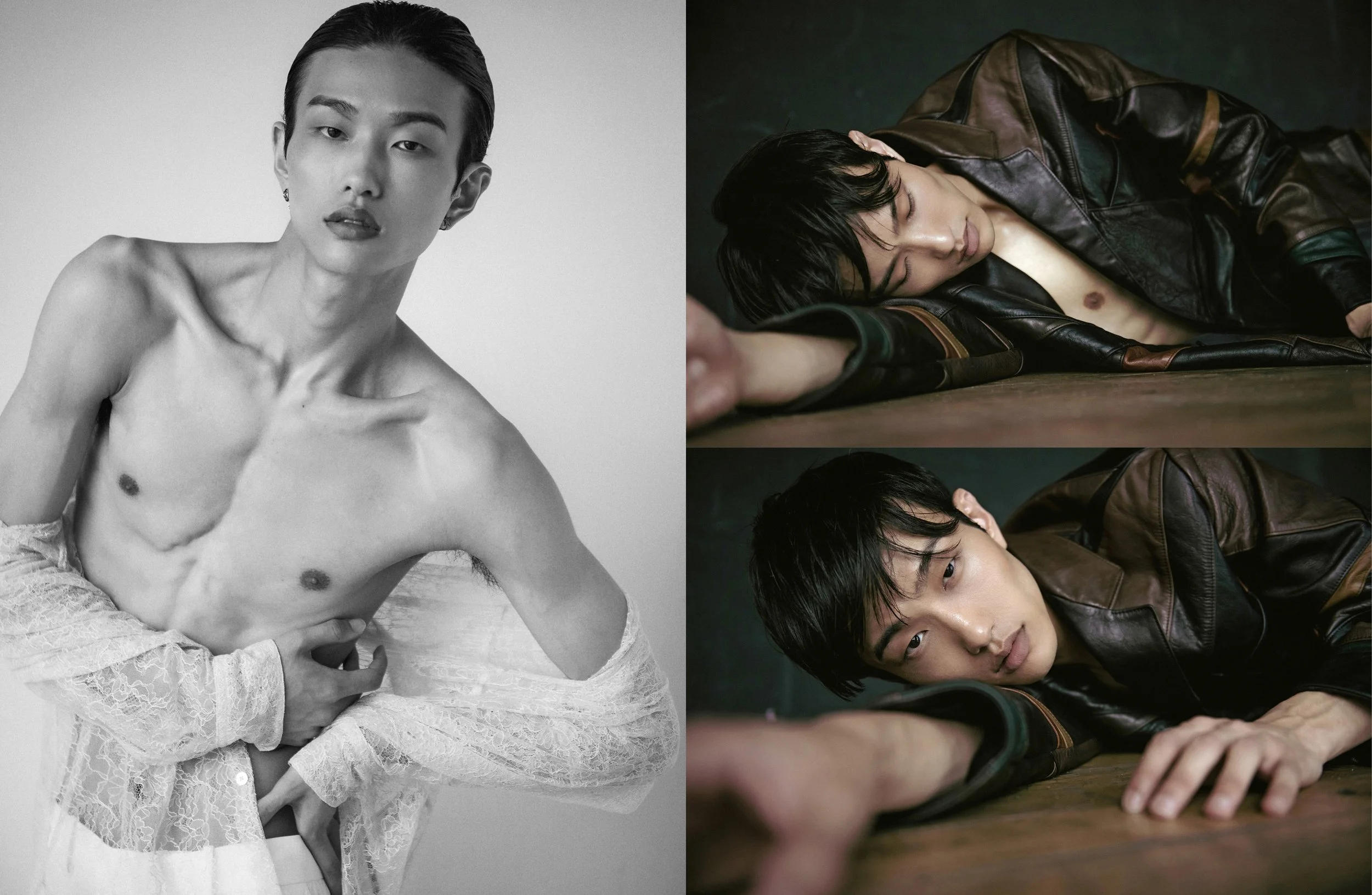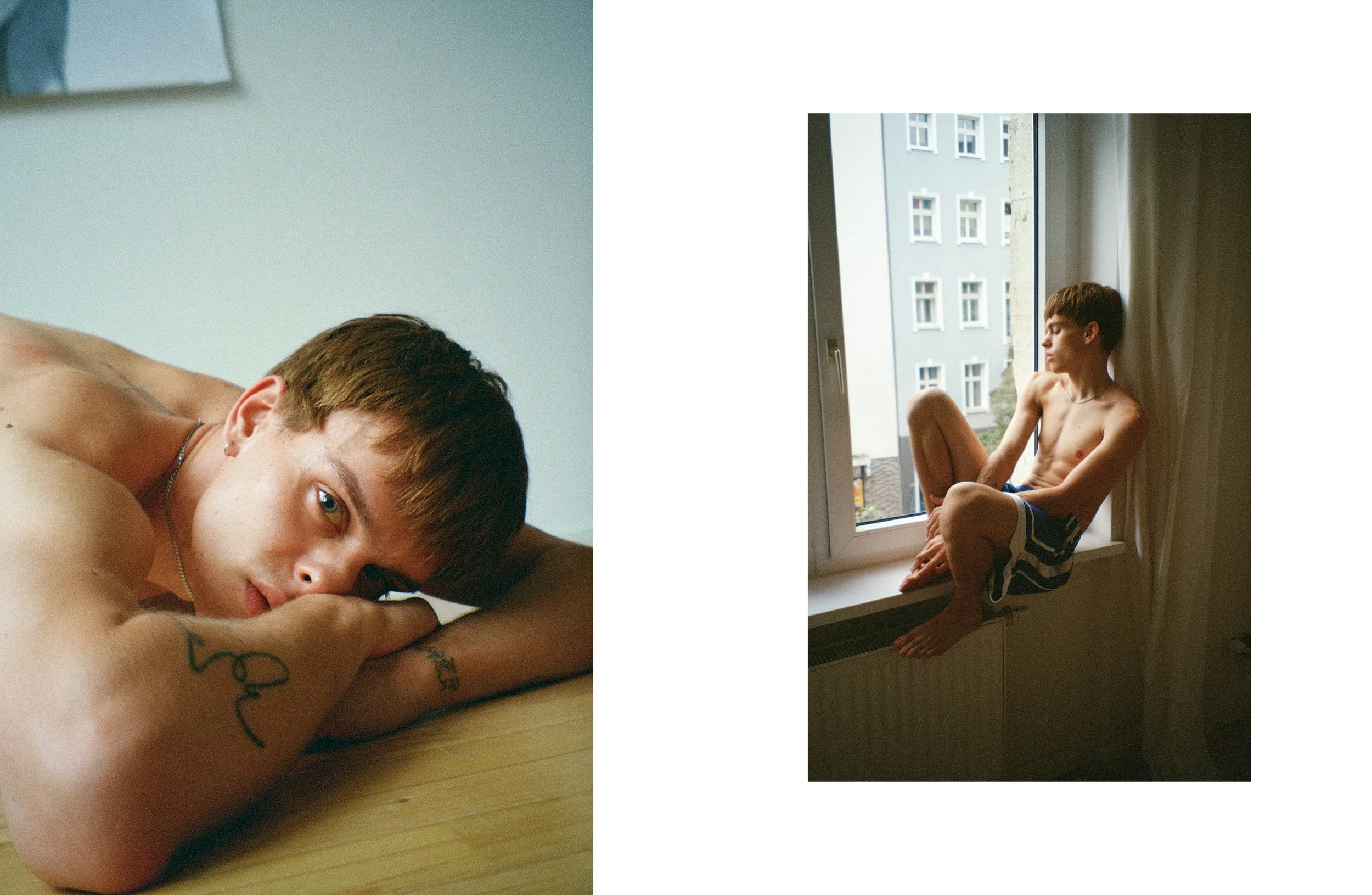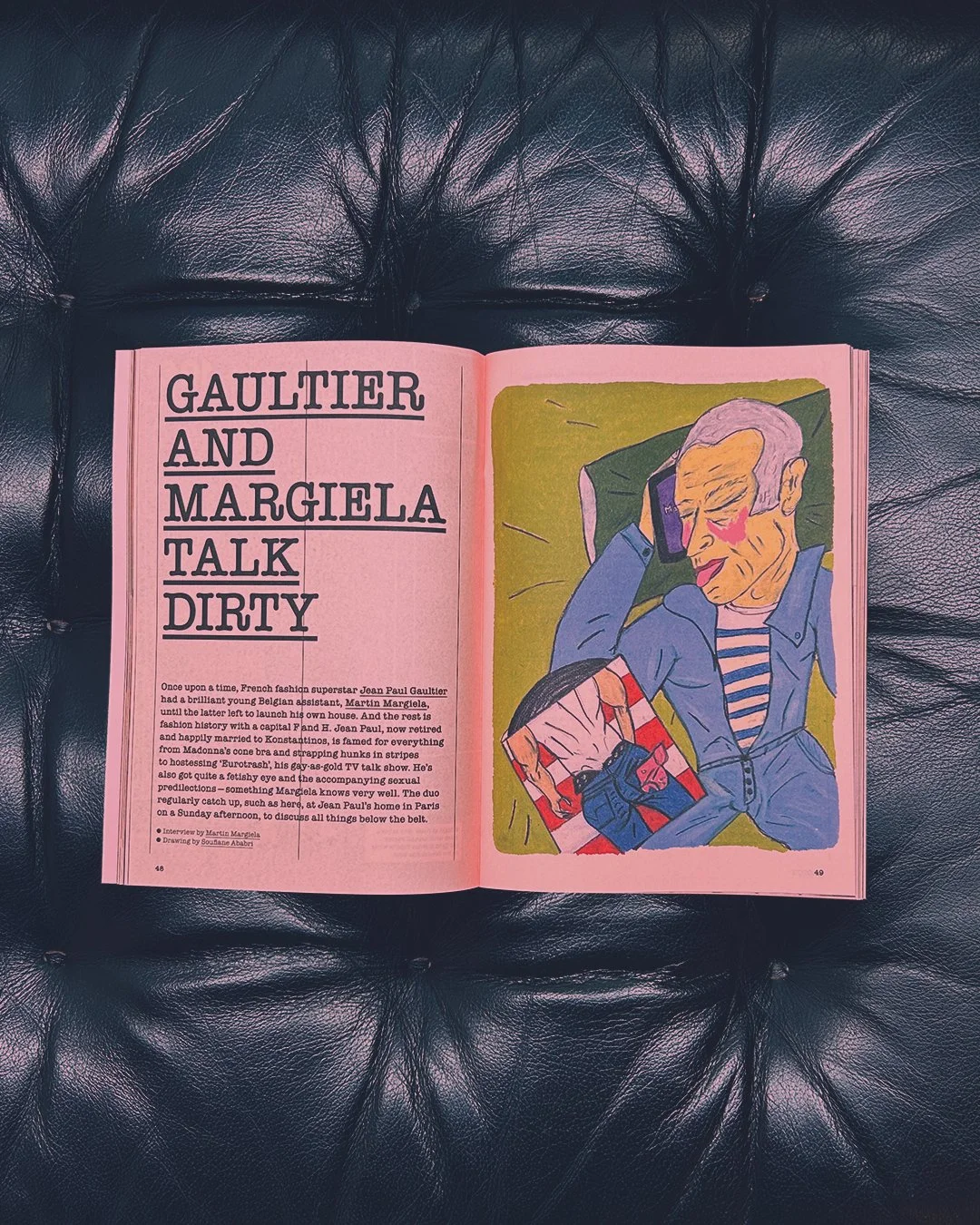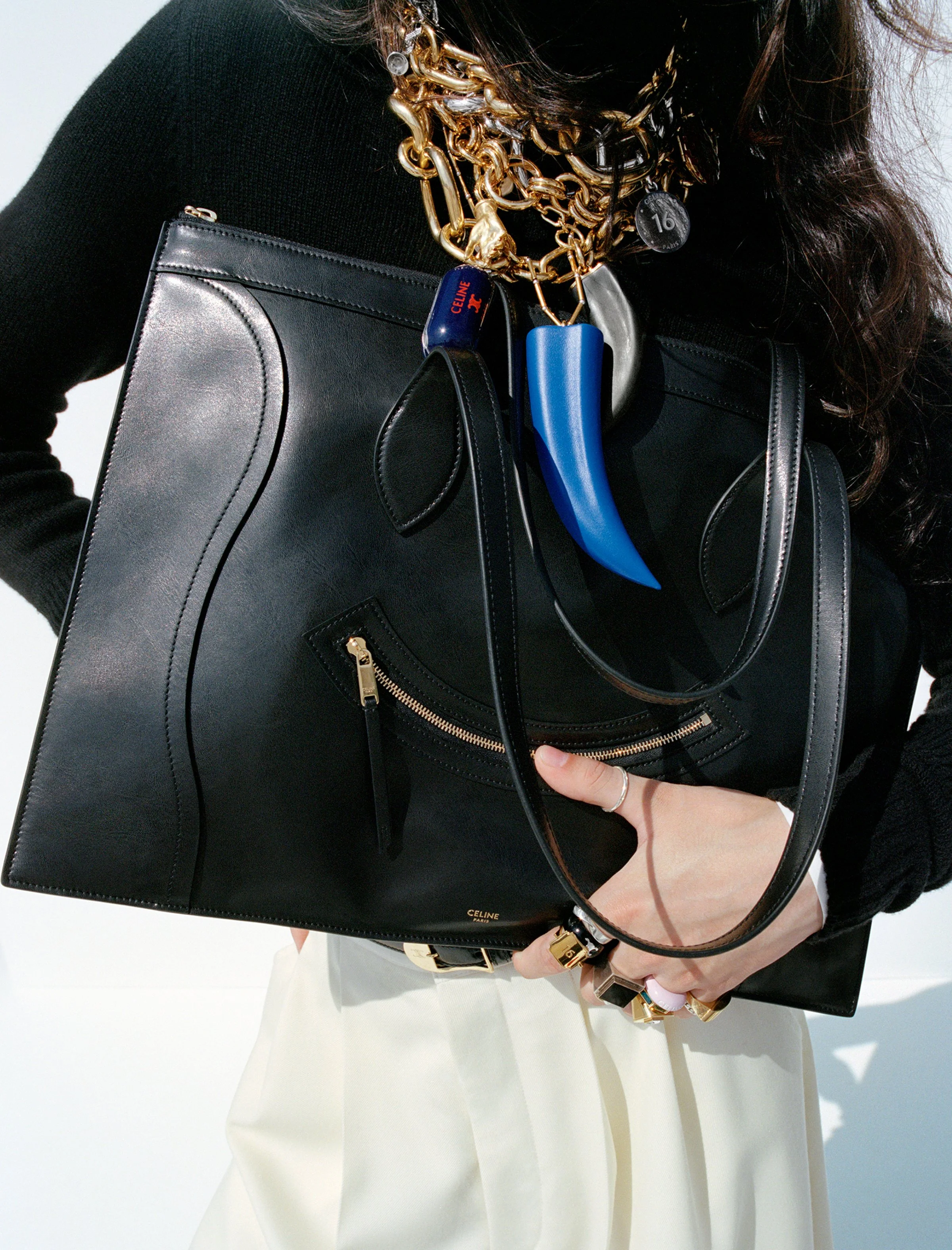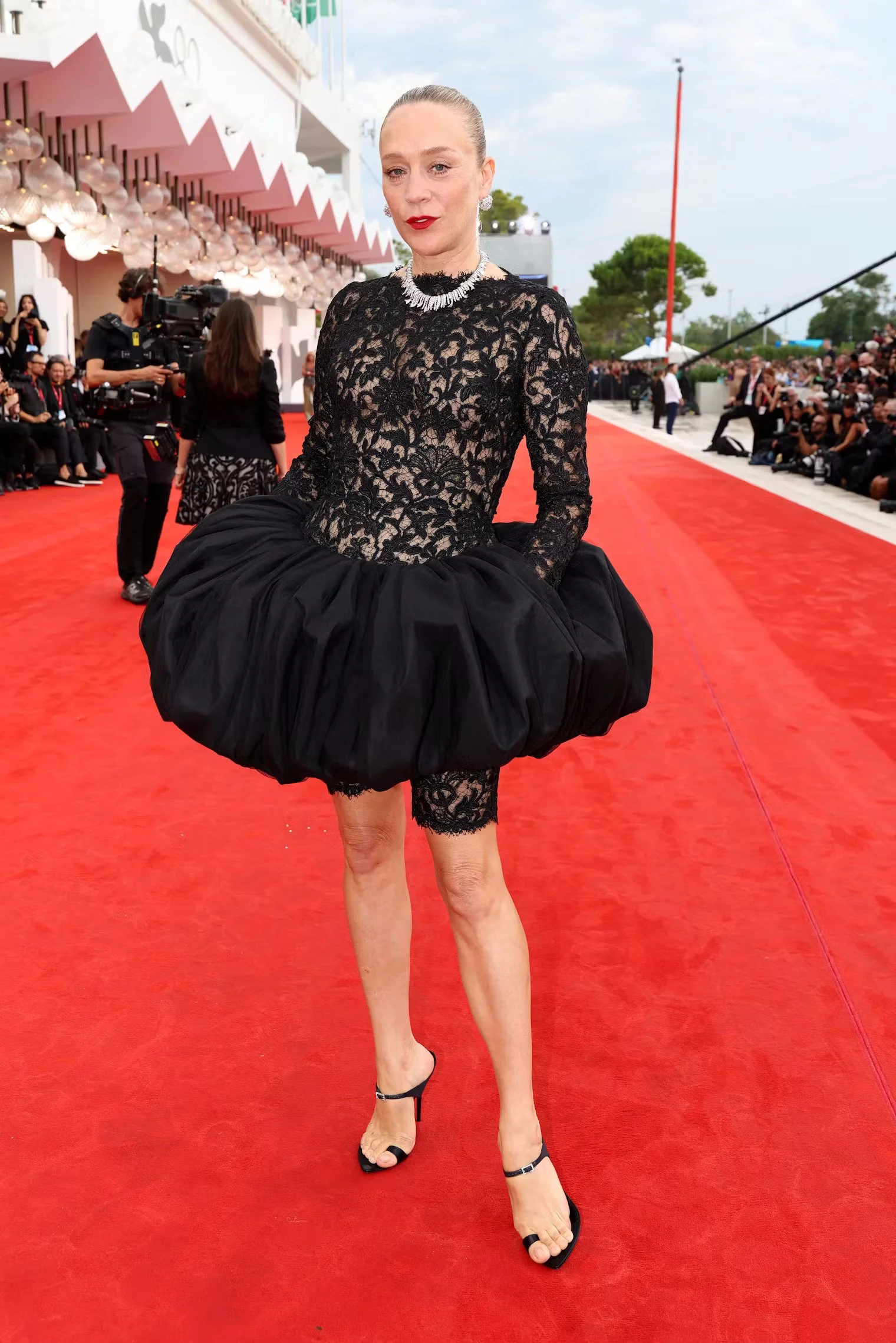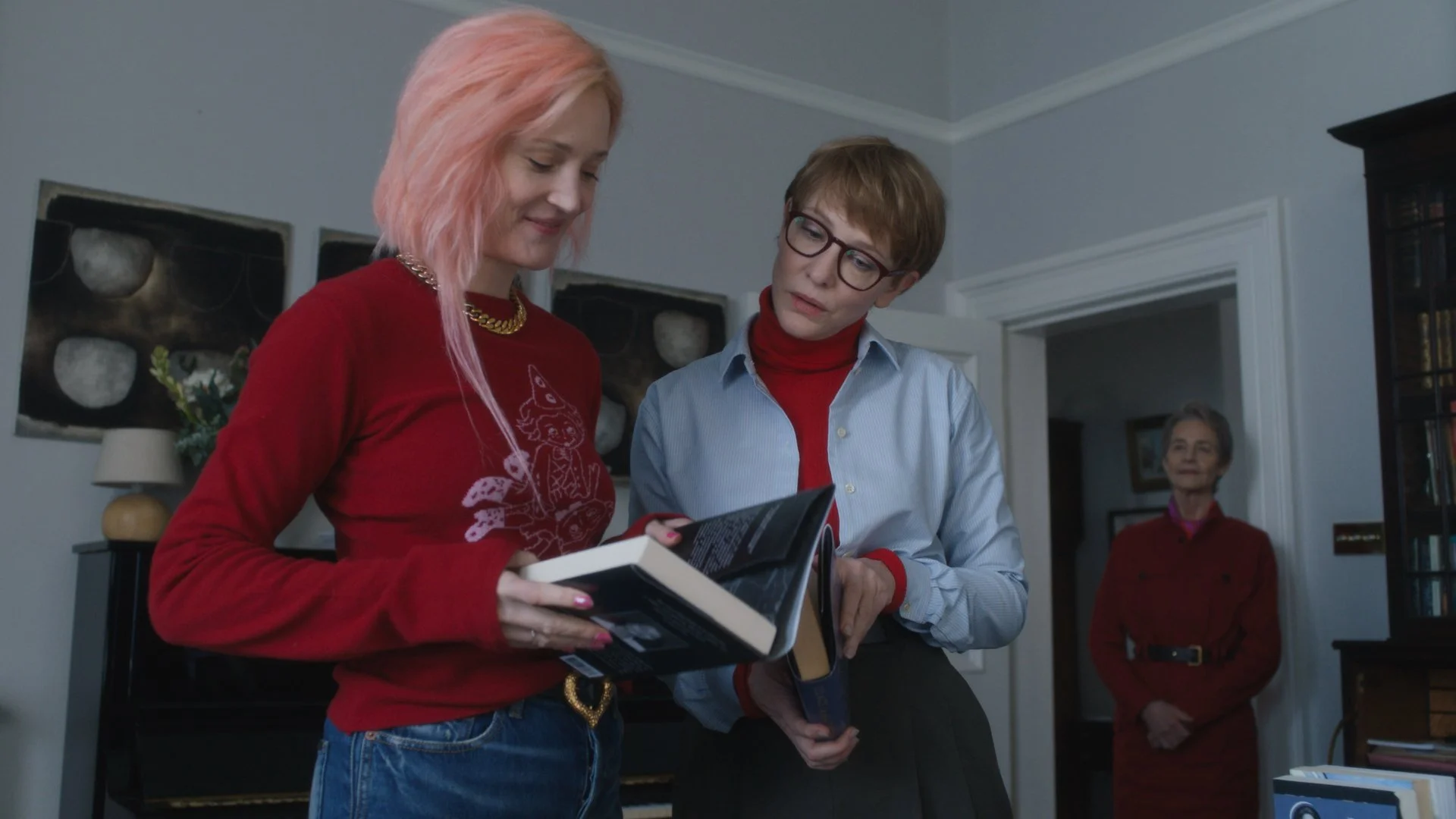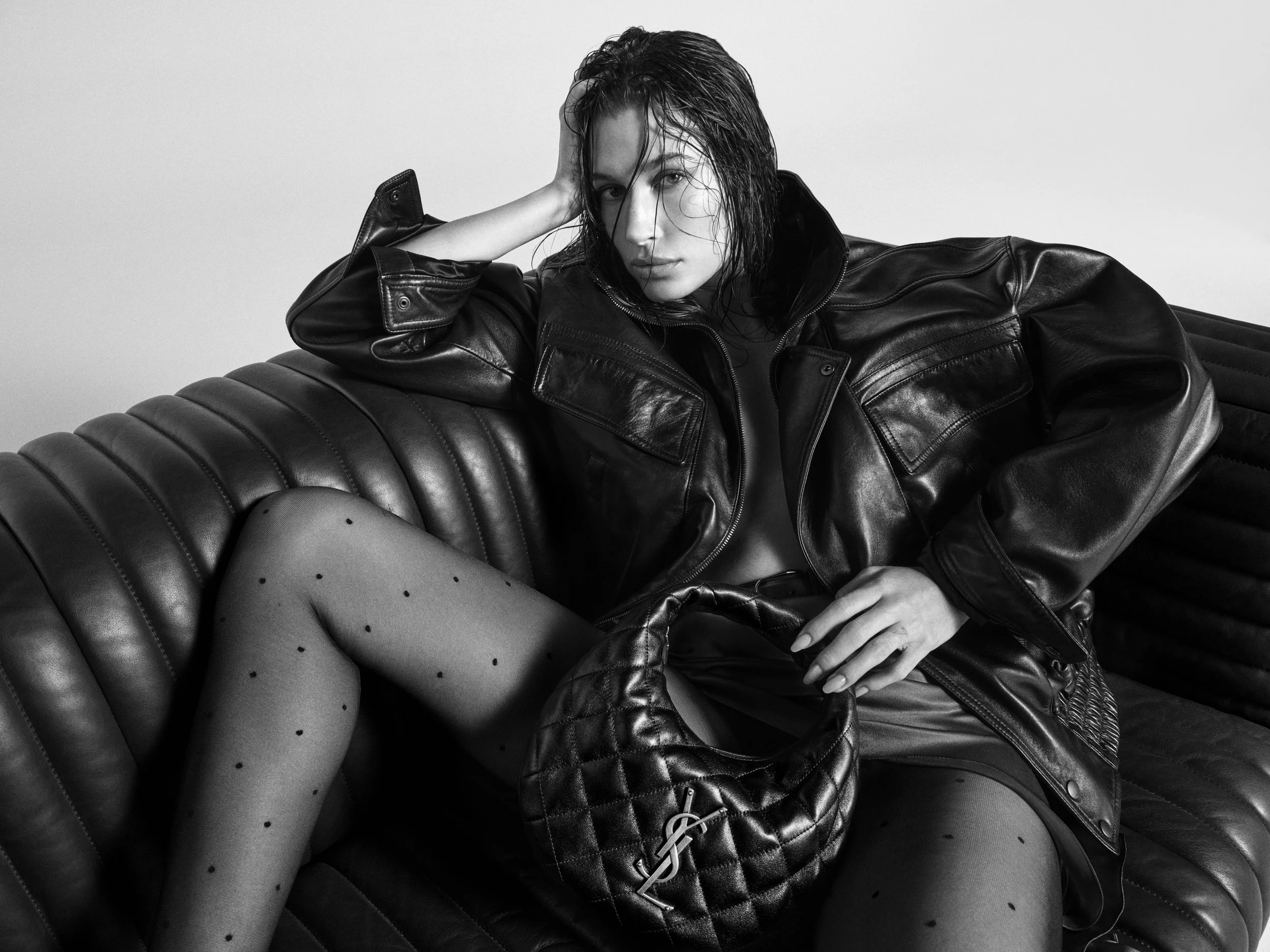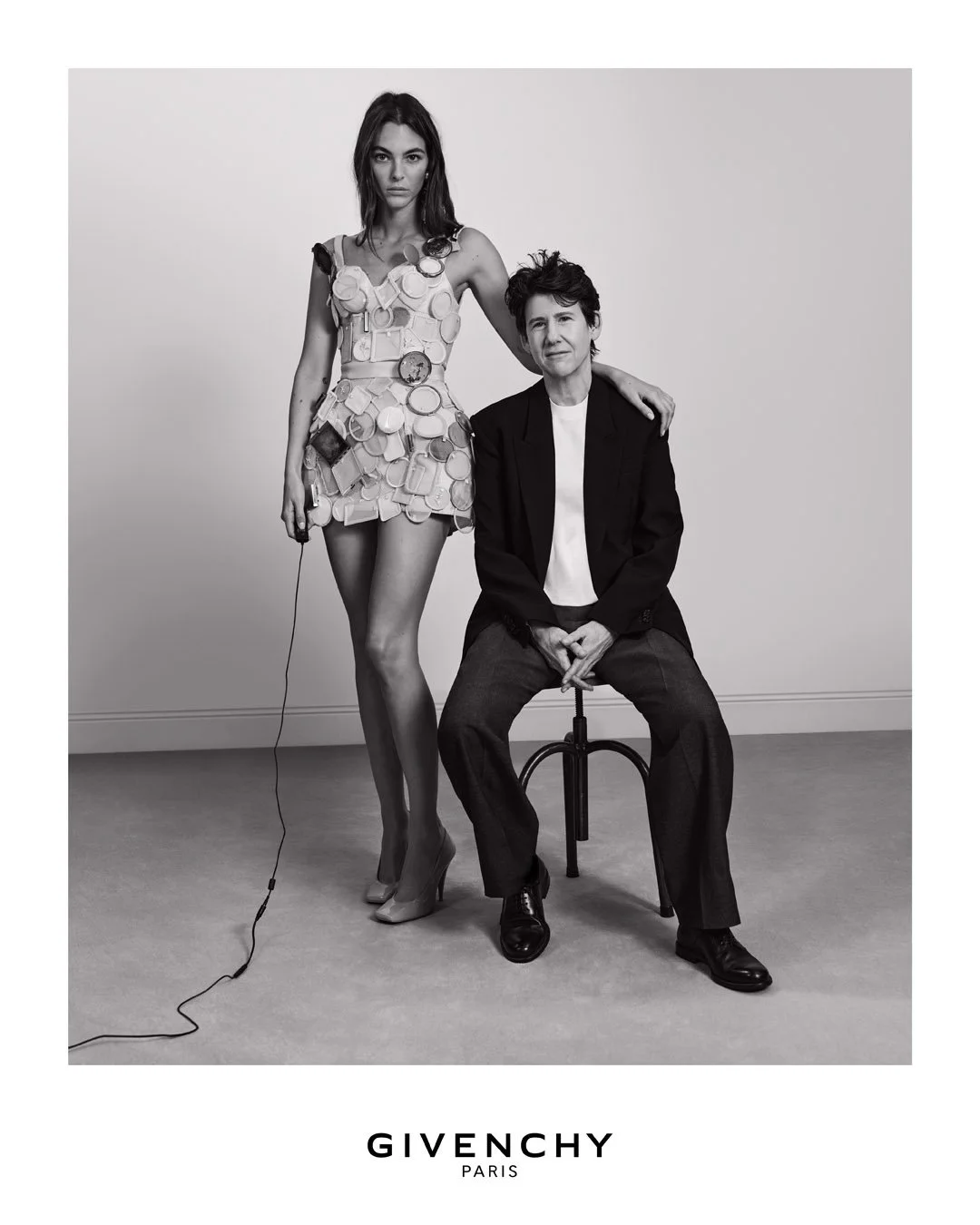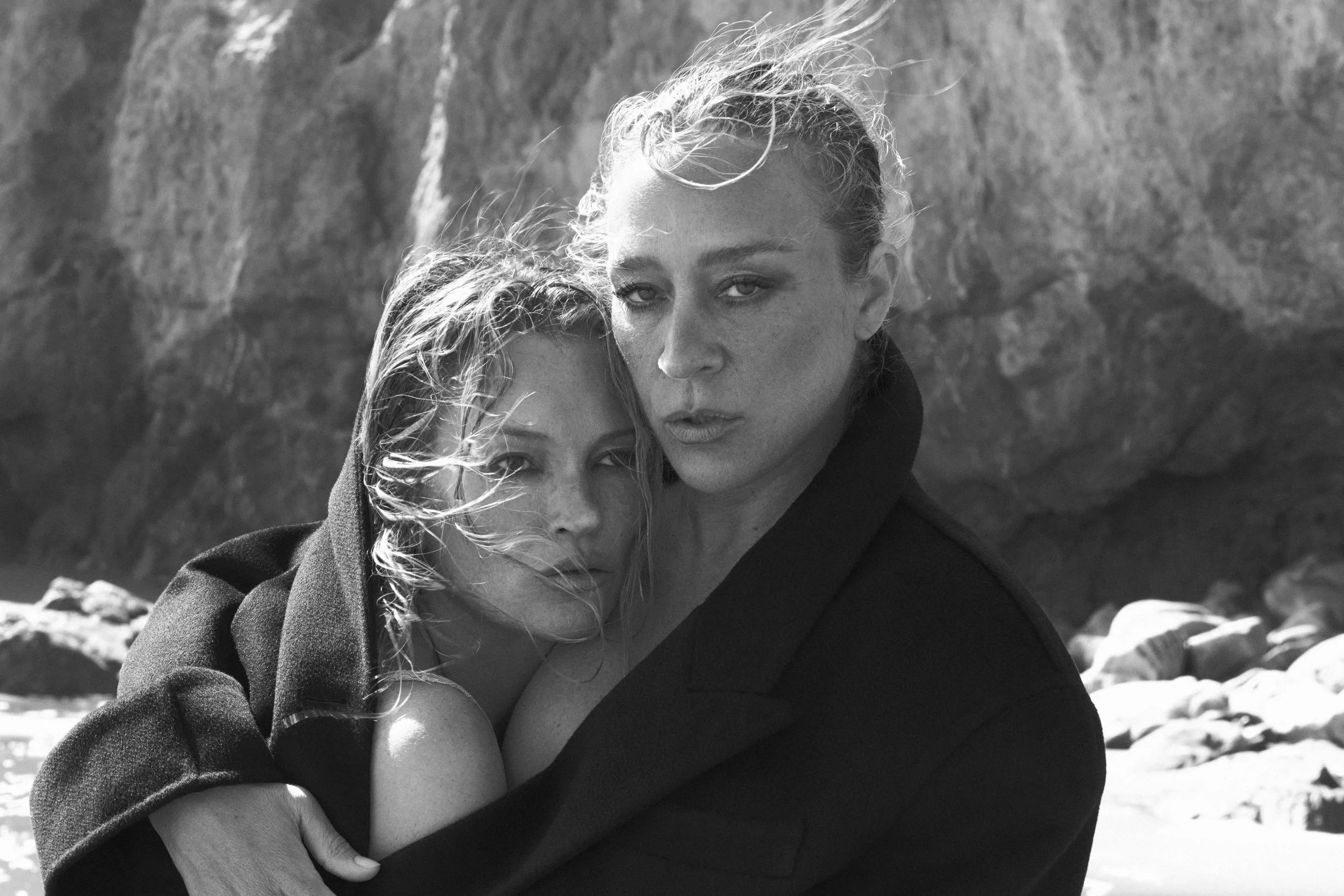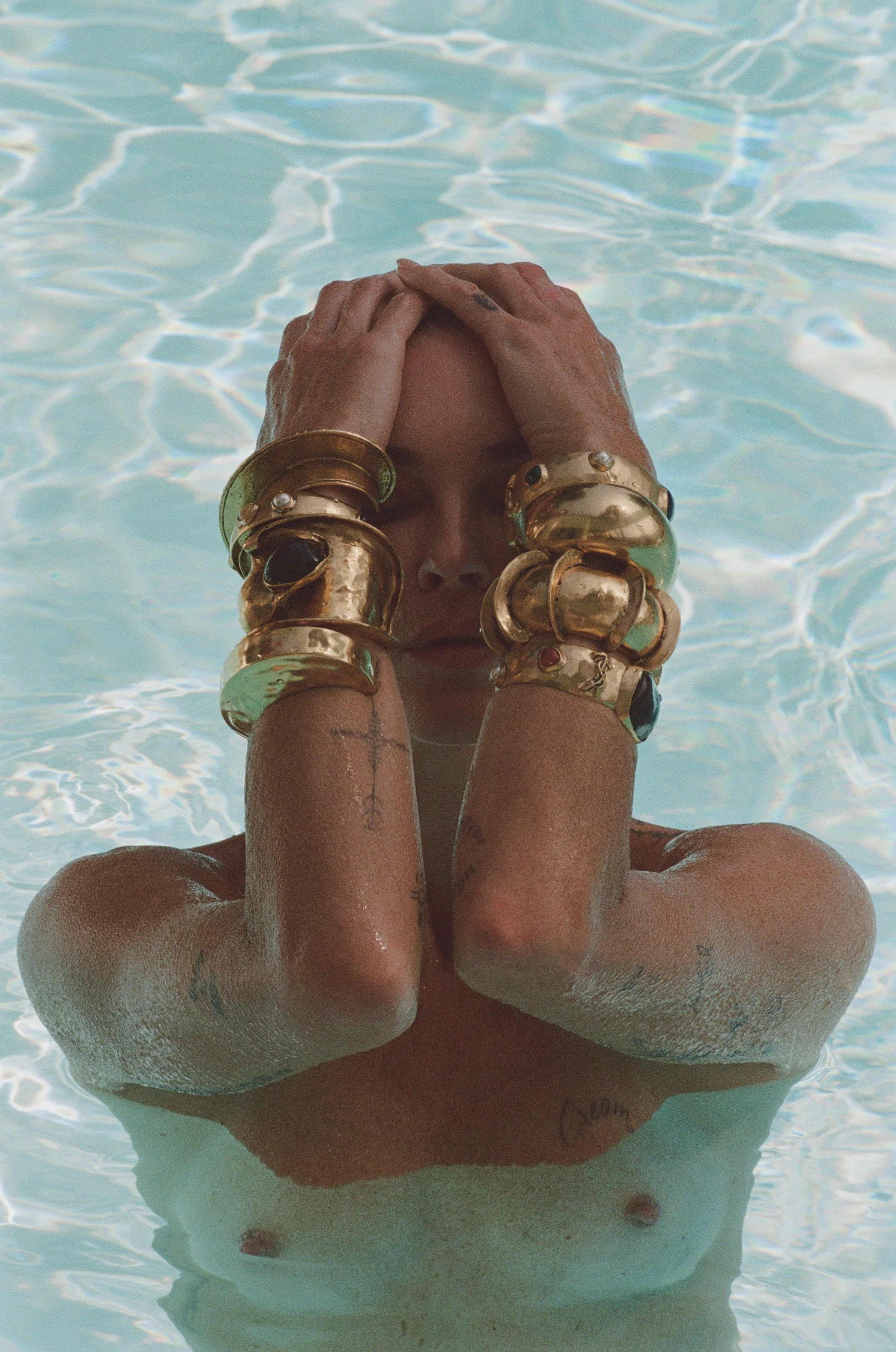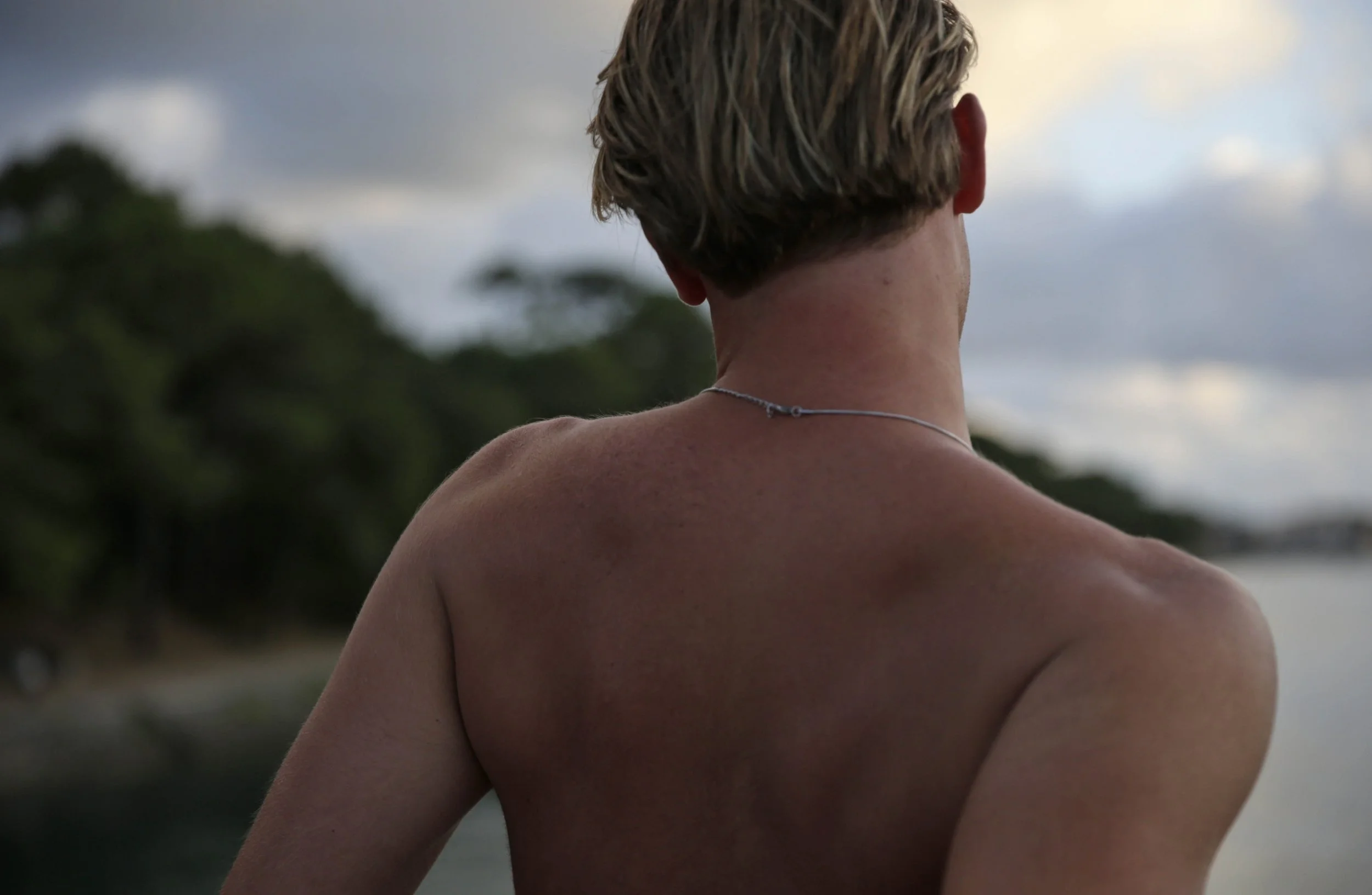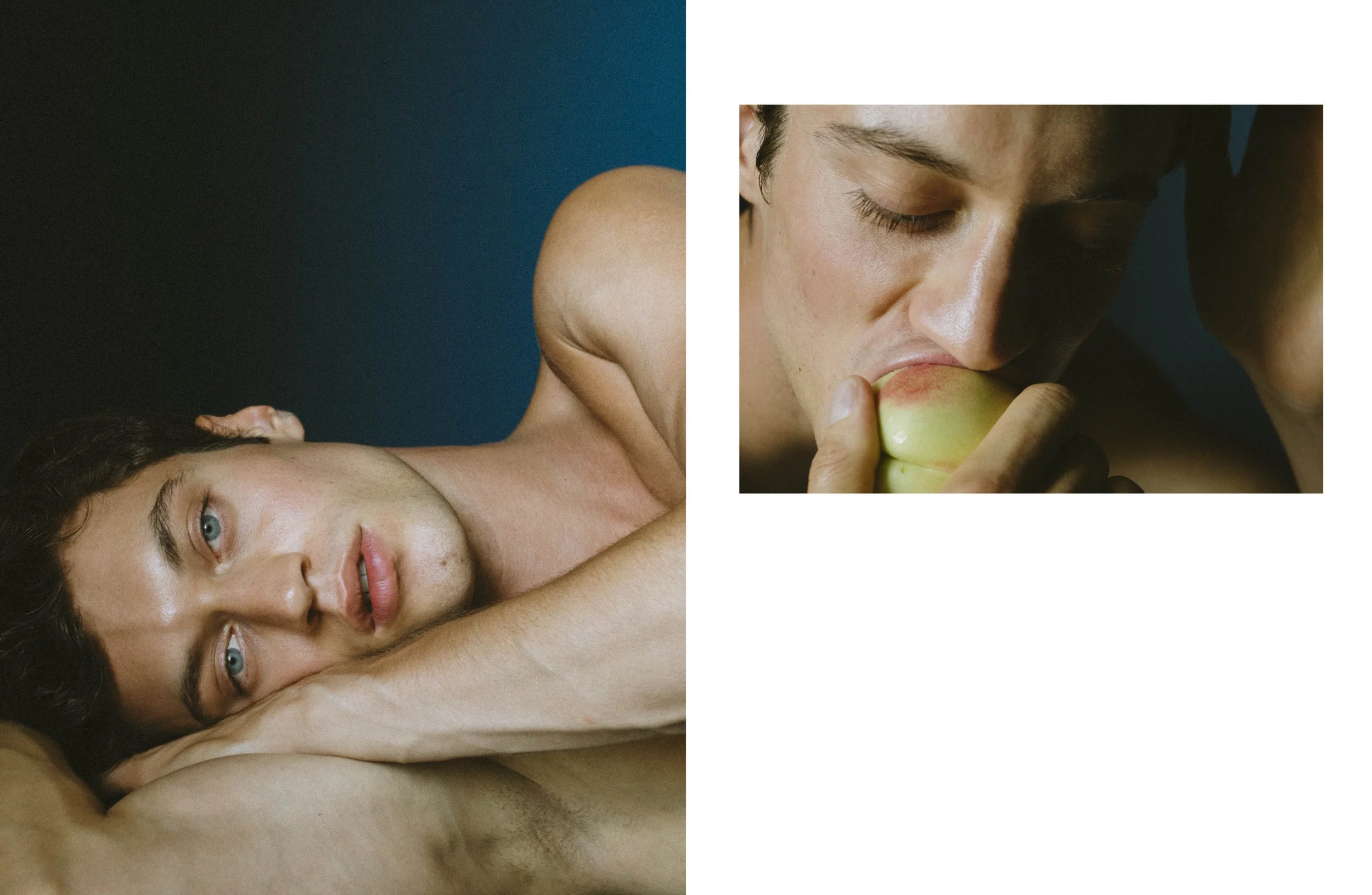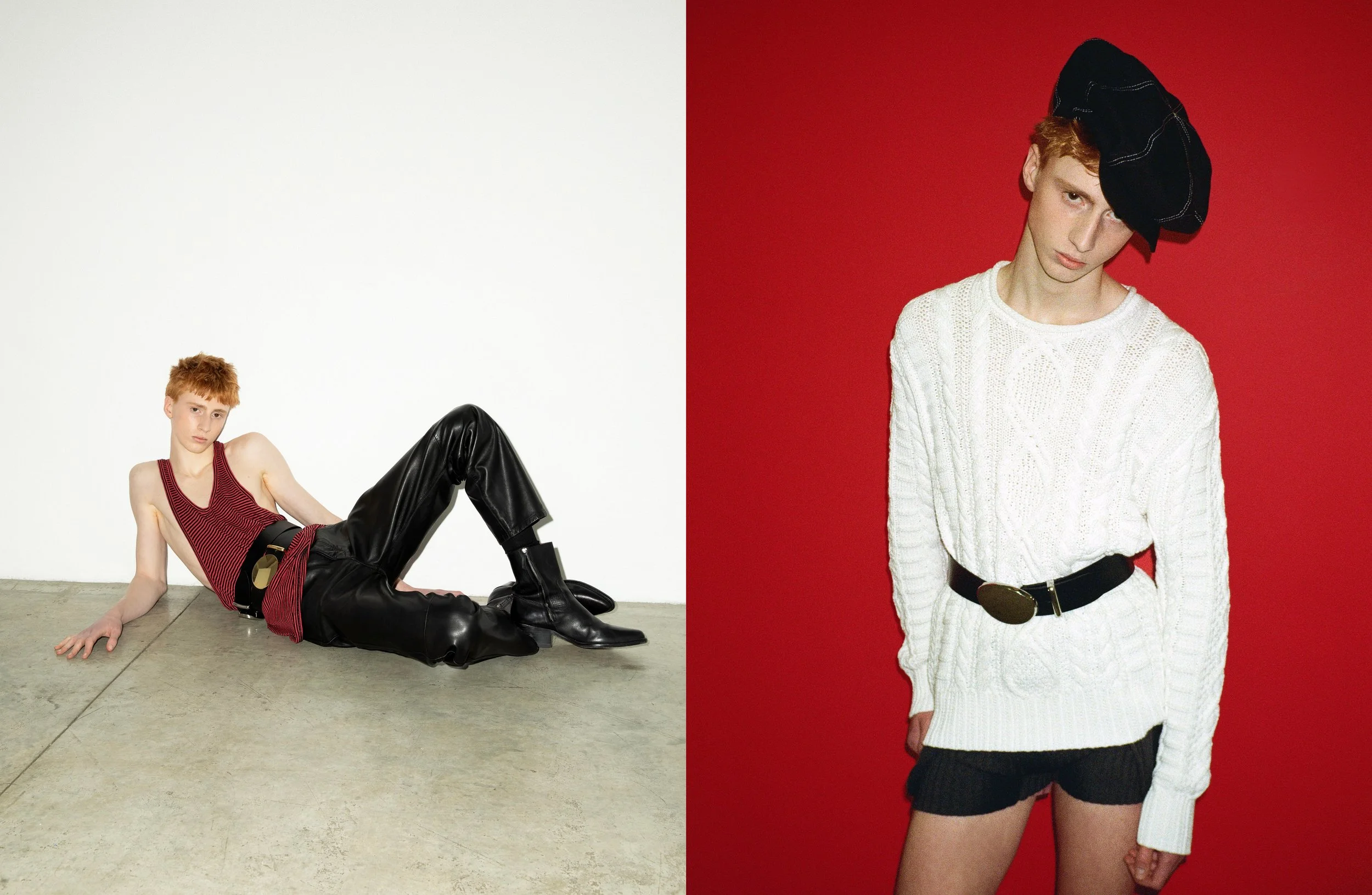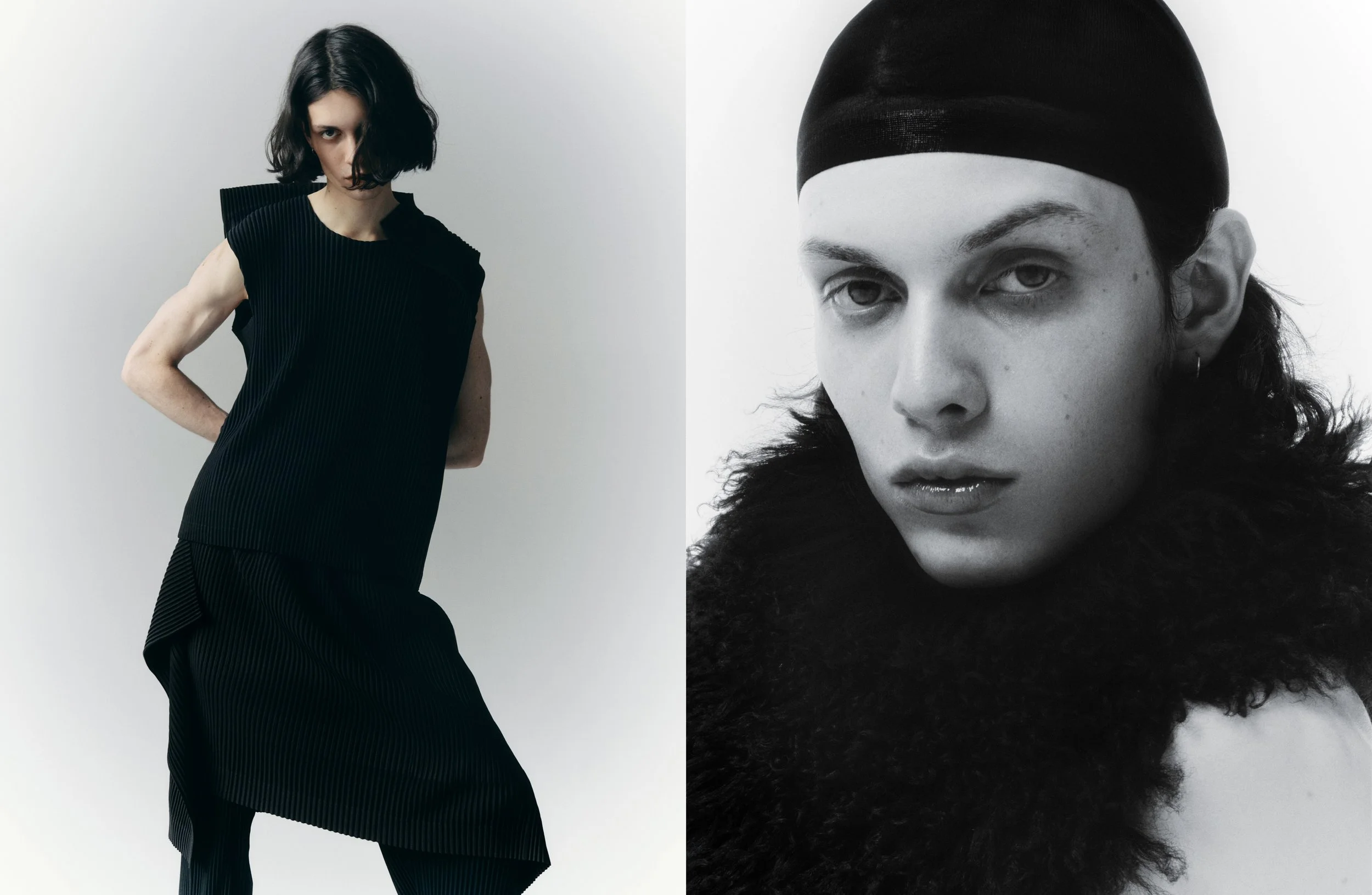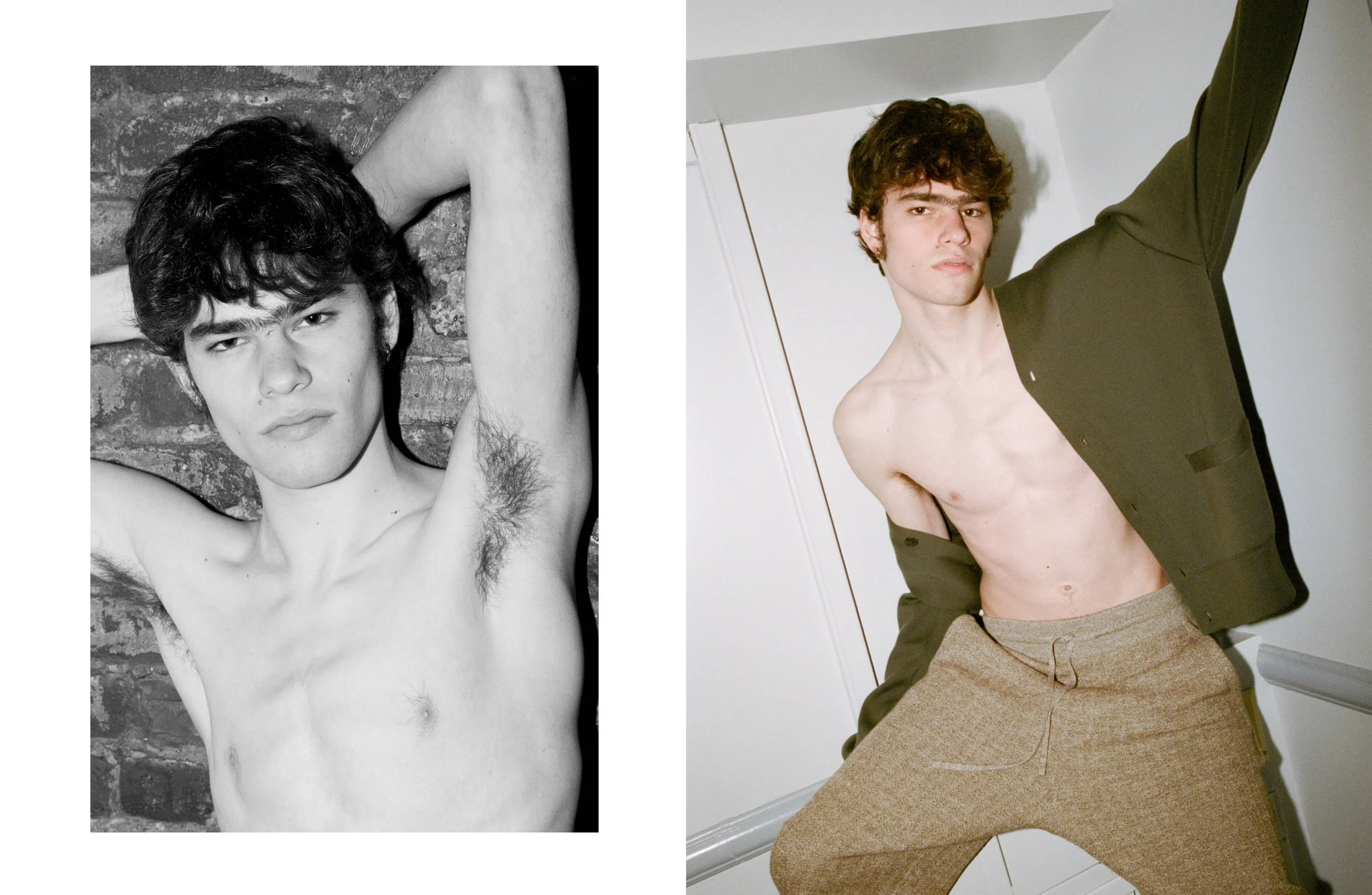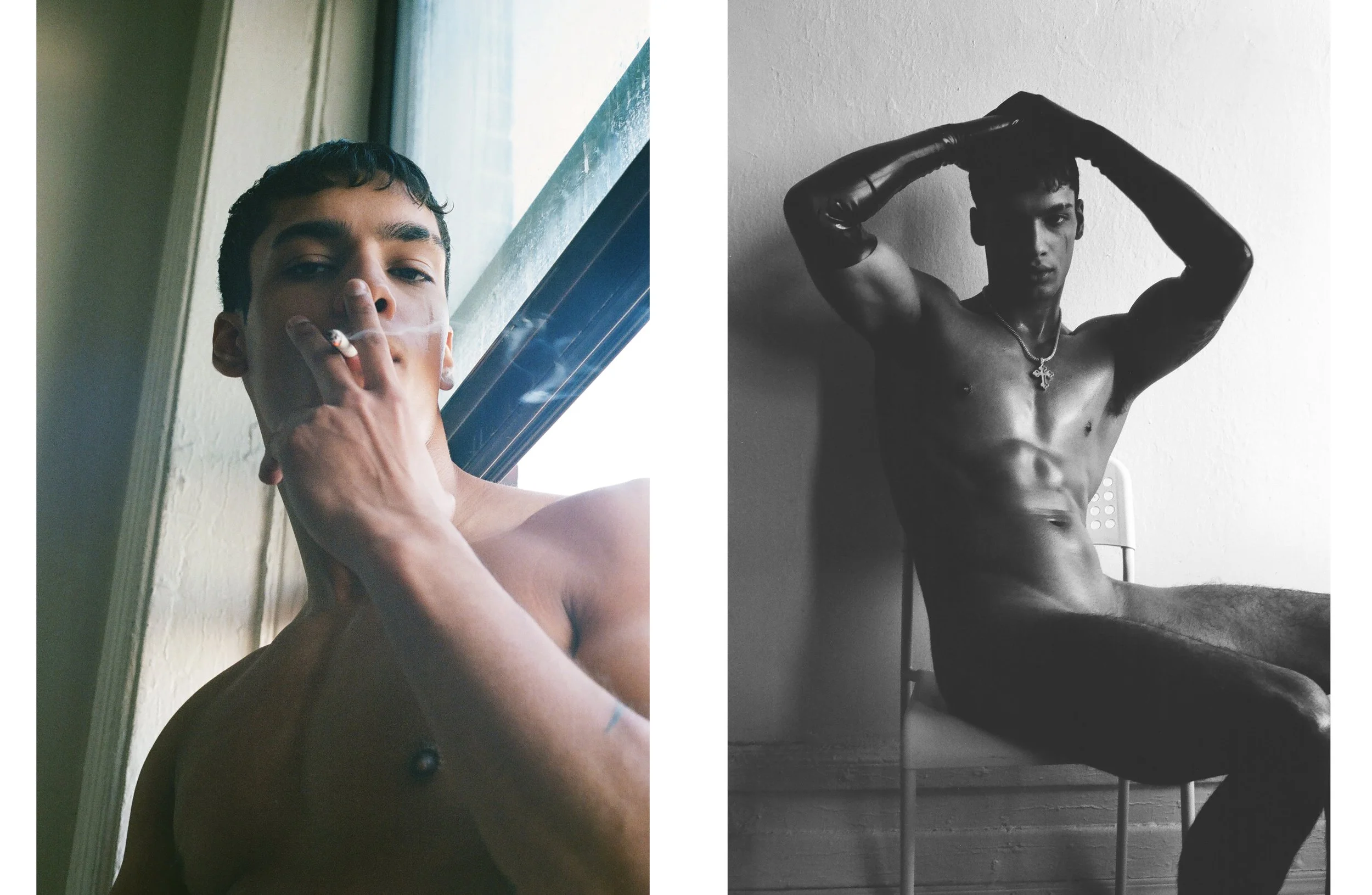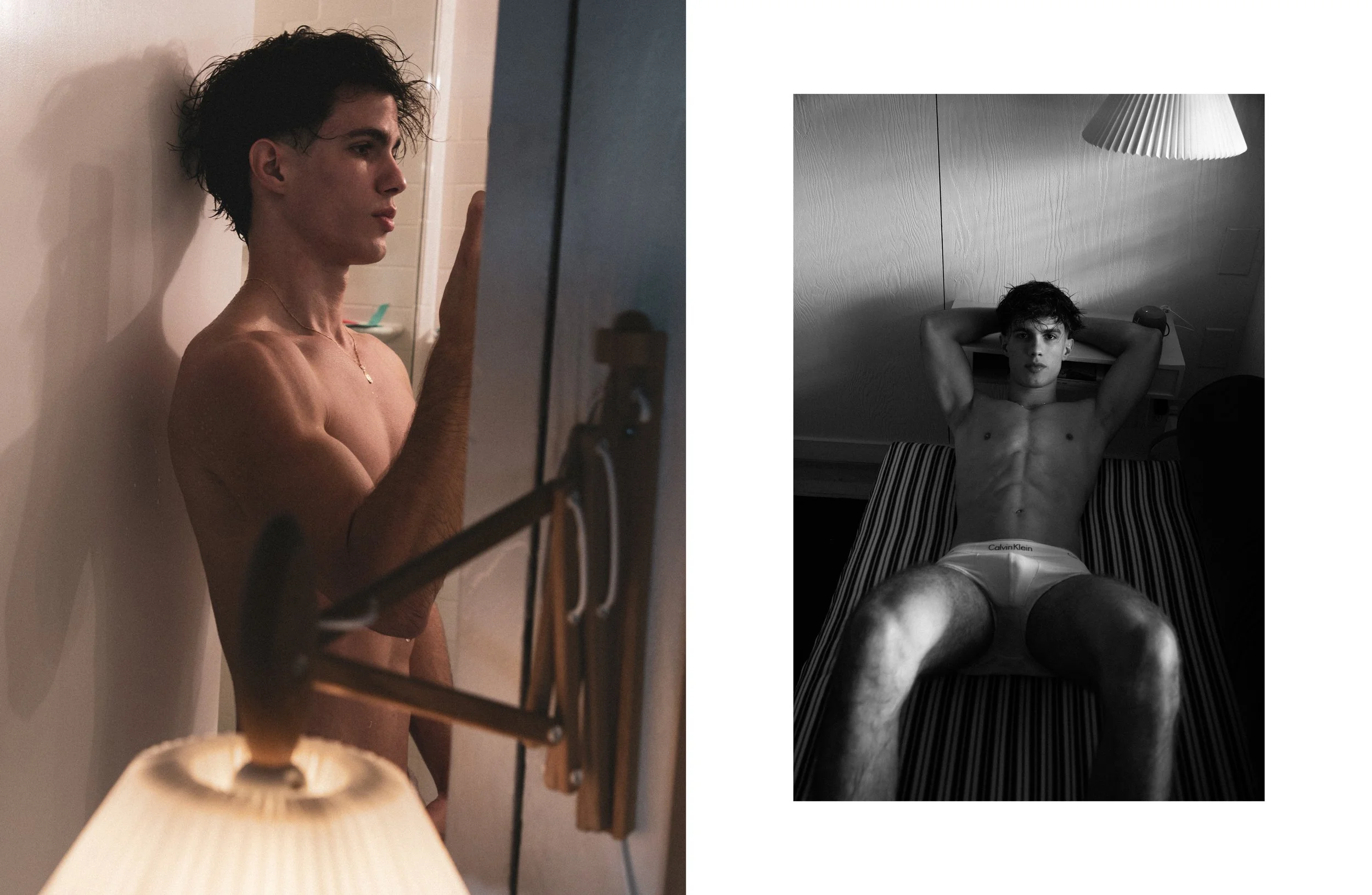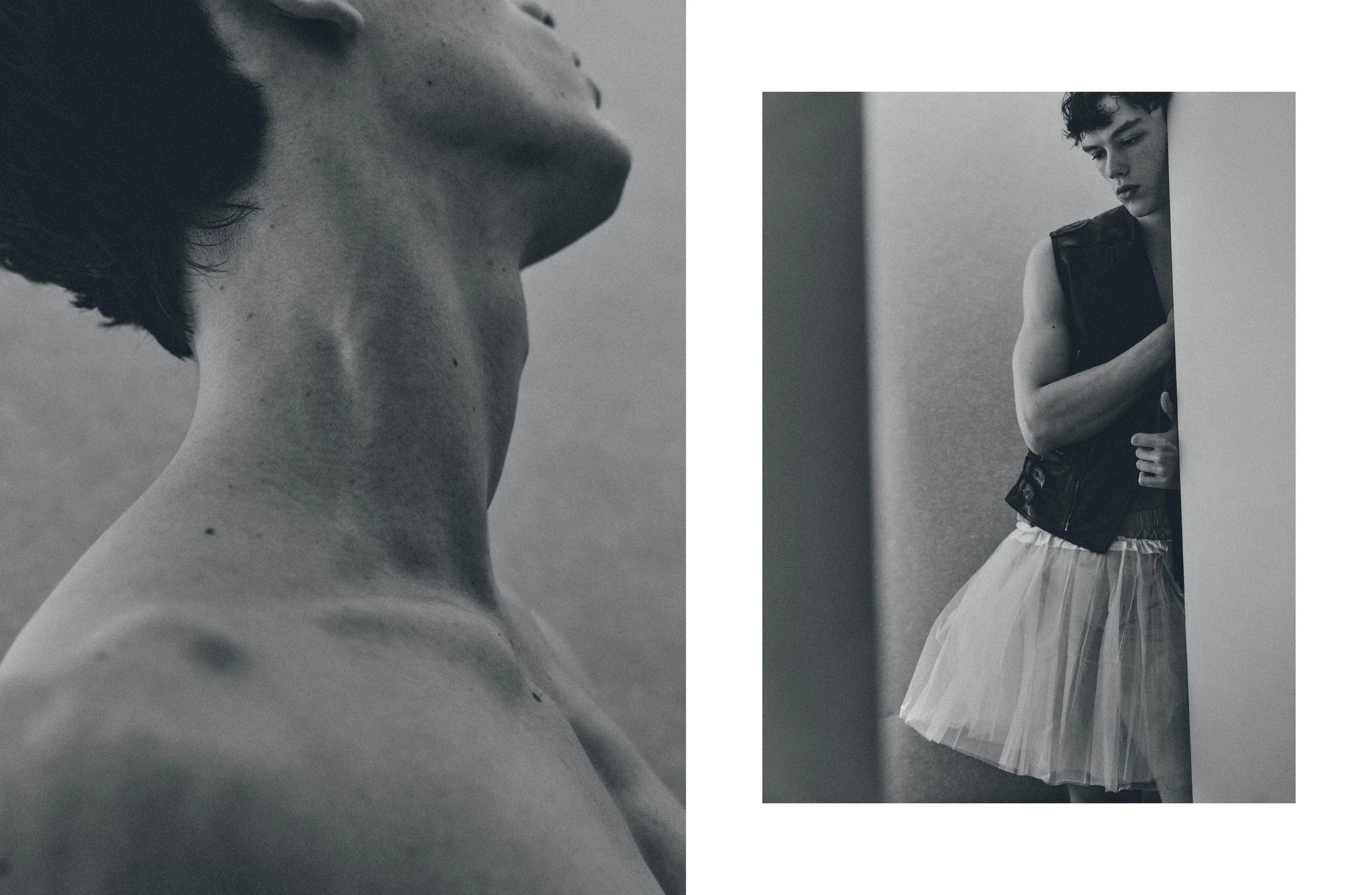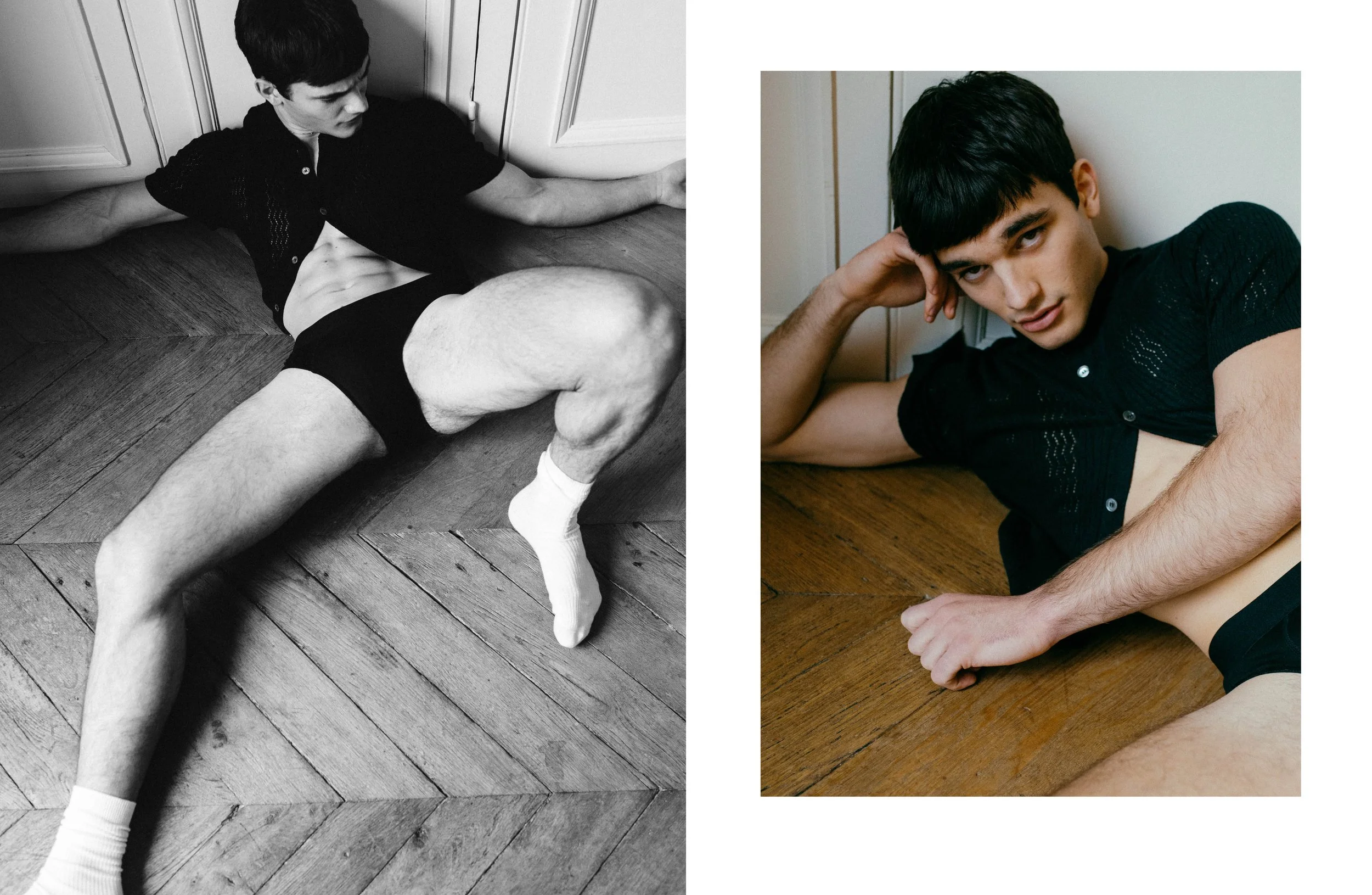Marking his first collection for the French house, Mark Thomas showcased his vision for Carven. This season, the premise was simple: a Parisian summer.
Looking at the collection, one can easily imagine the woman who wears it: yoga or Pilates in the morning, matcha afterwards, a meticulous skincare routine, working from home, and a preference for organic food. The collection transports us into a lifestyle that feels slow, natural, and peaceful, embodying a woman who is refined yet seeks ease, comfort, and practicality.
The colour palette is refreshing and clean, with no strong hues or bold prints. The lines are simple, while the fabrics feel delicate and luxurious, creating a refined balance between minimalism and fluidity. Rooted in clean tailoring, soft femininity, and quiet luxury, the overall aesthetic is elegant yet modern, emphasising ease of movement, versatile layering, and sculptural silhouettes.
Oversized blazers, elongated trousers, and fluid coats convey a sense of nonchalant sophistication. Clean slip-style gowns, column dresses, and airy maxi silhouettes evoke understated elegance, allowing the body to breathe and move naturally.
Statement pieces such as billowy tops and dresses are paired with slim or wide trousers, creating a playful balance of proportions. A muted, neutral base of ivory, cream, black, and navy is elevated by soft pastels and subdued tones, shaping a versatile everyday wardrobe. Whites recall the orchid so dear to Madame Carven. Fabrics like lace, lingerie-inspired details, cotton voile, jacquards, and silk introduce a natural sense of fluidity.
Words by Carolina Benjumea













